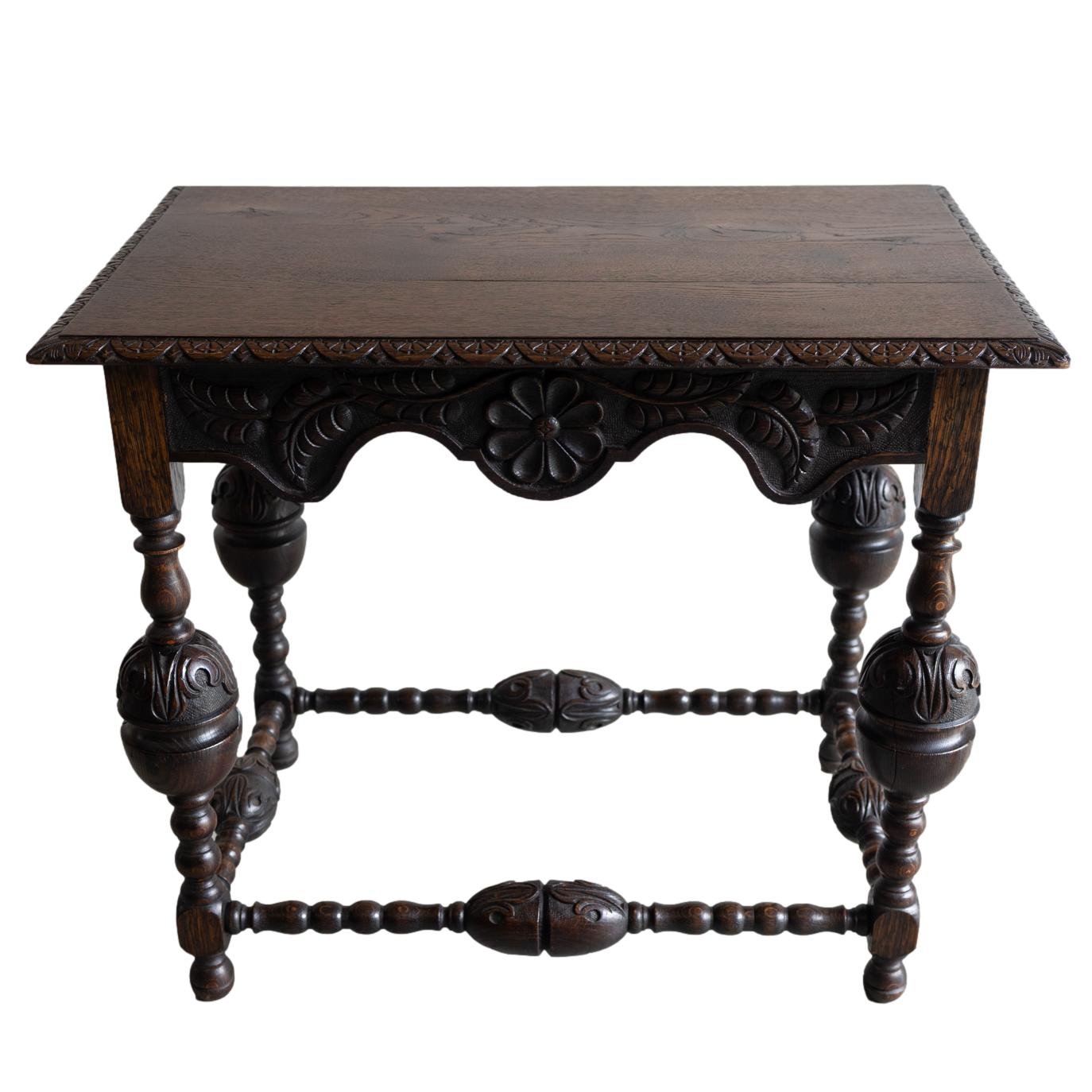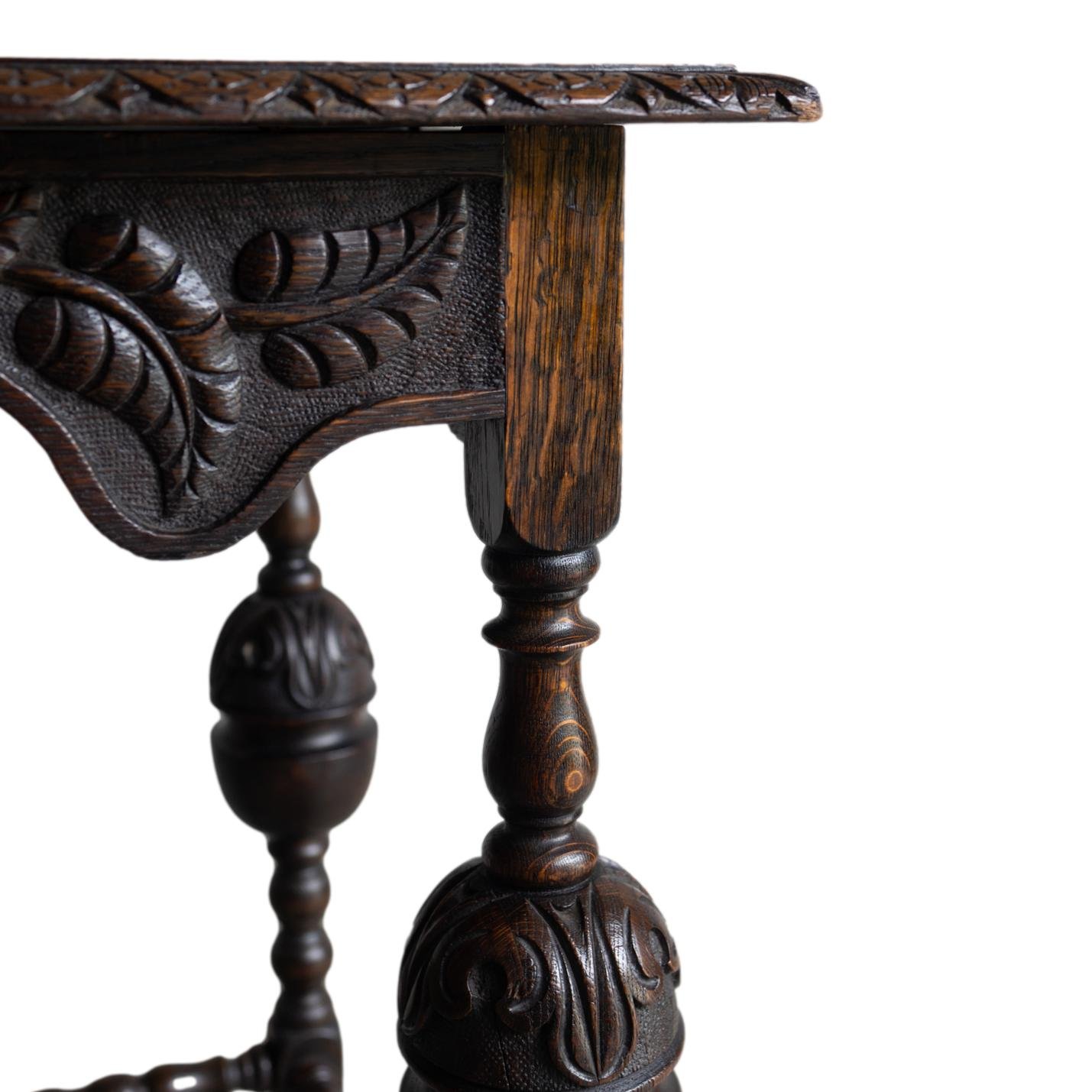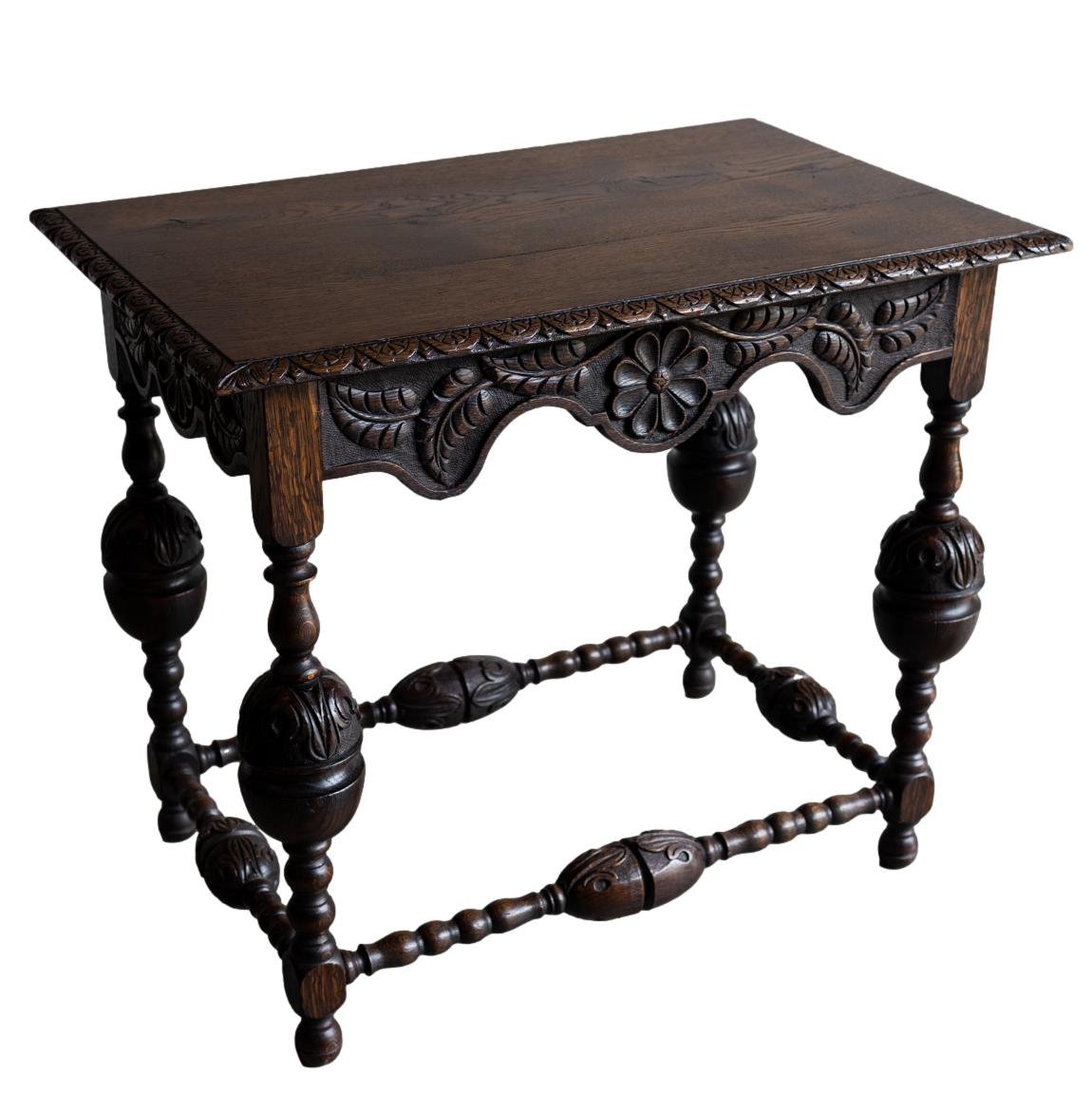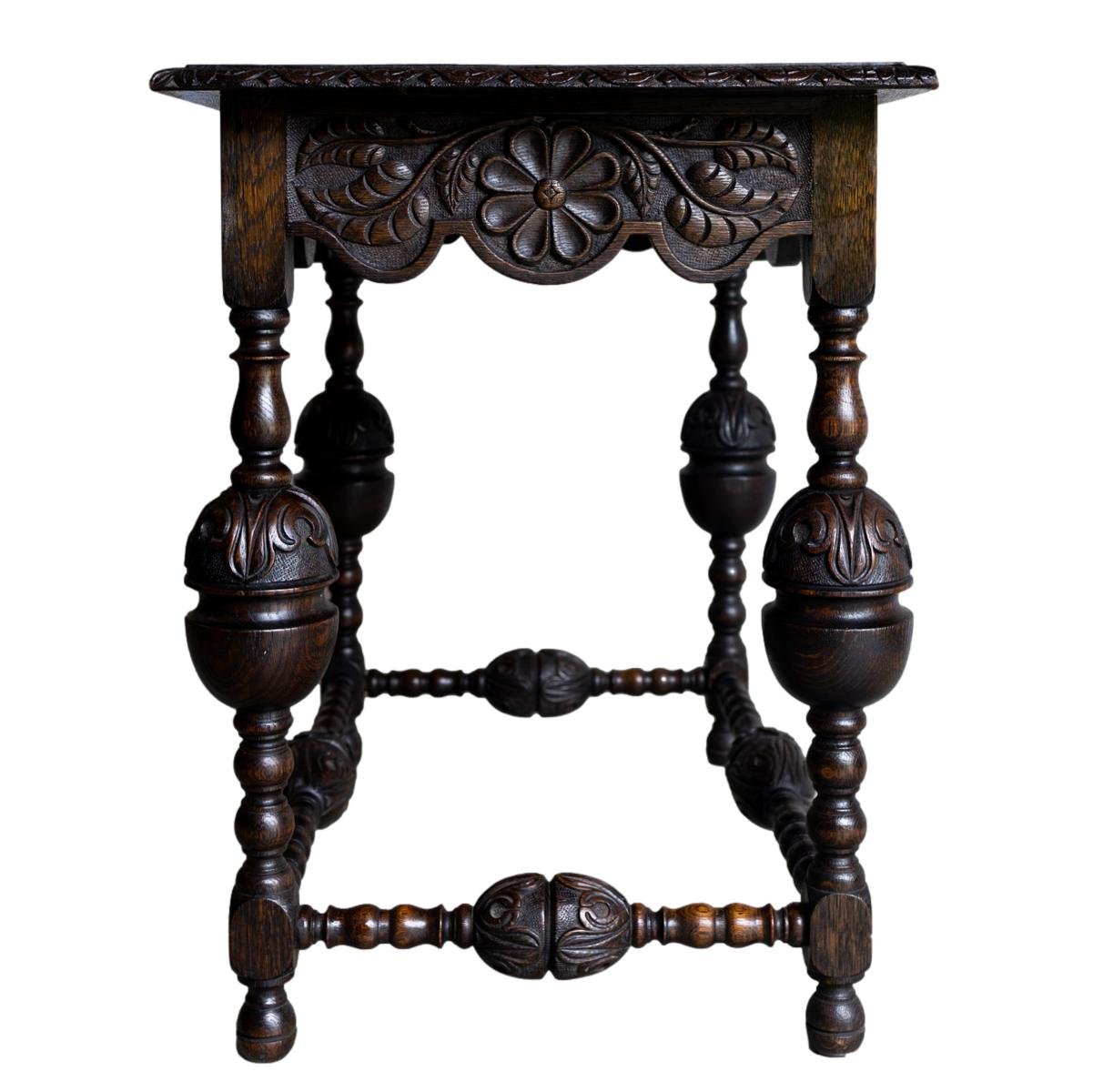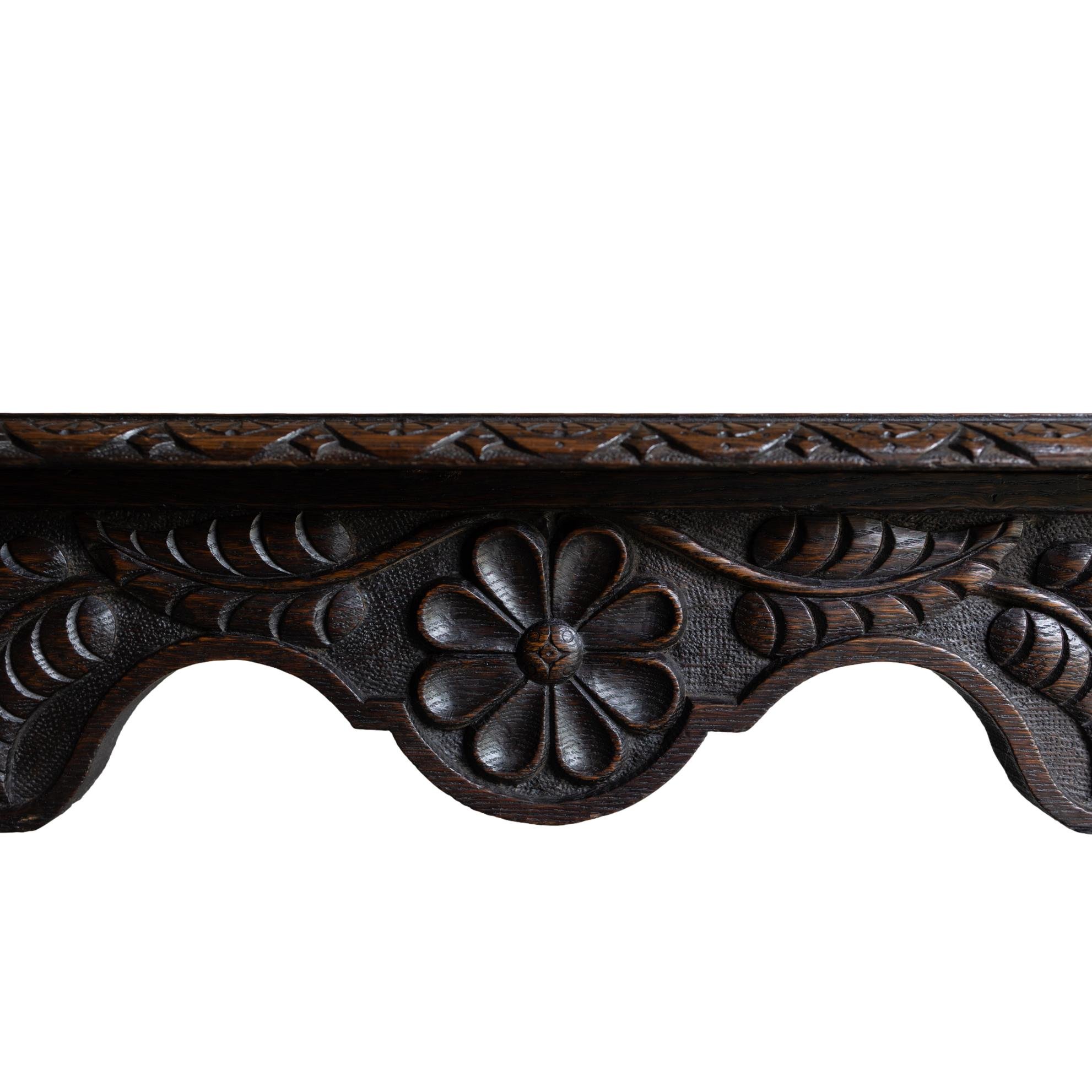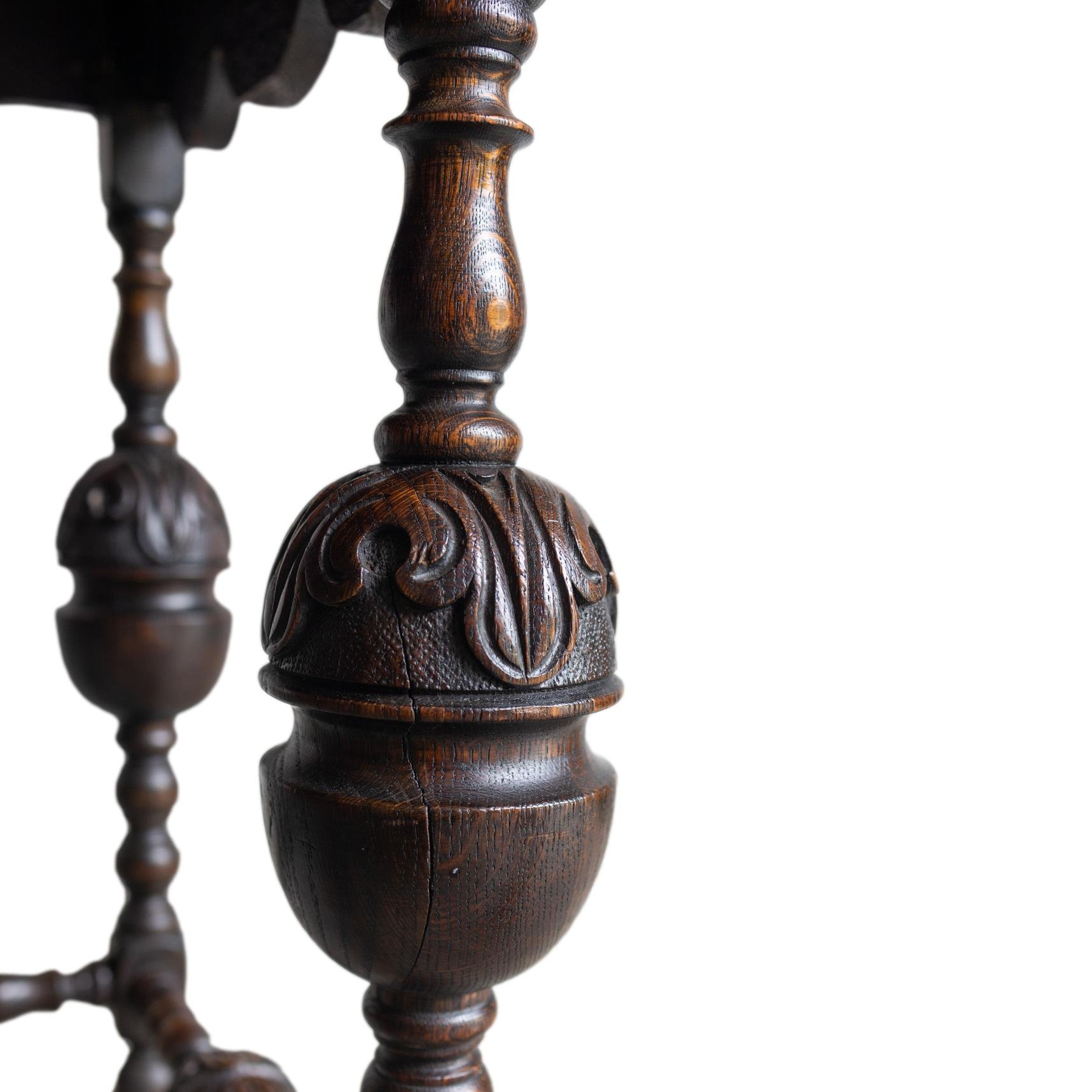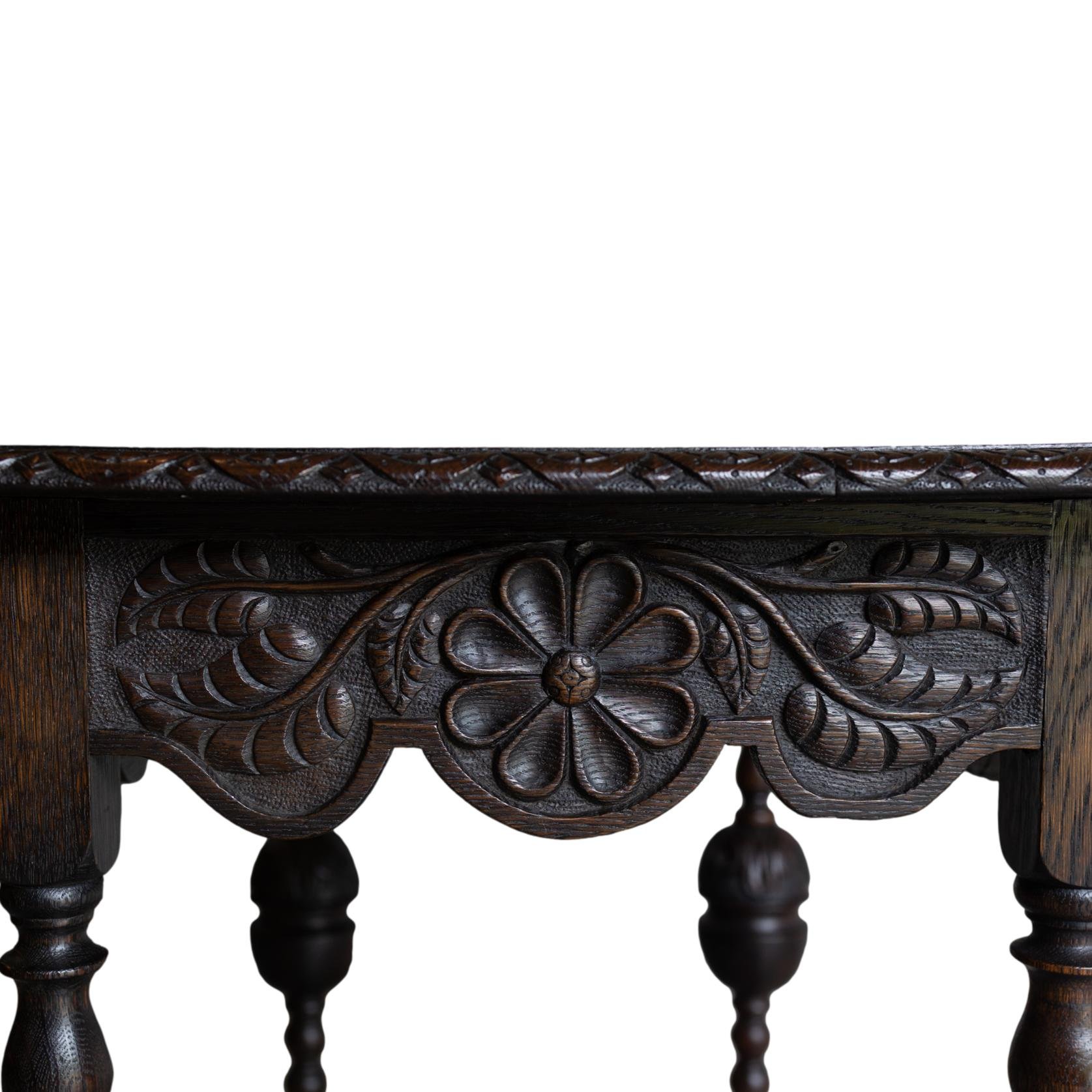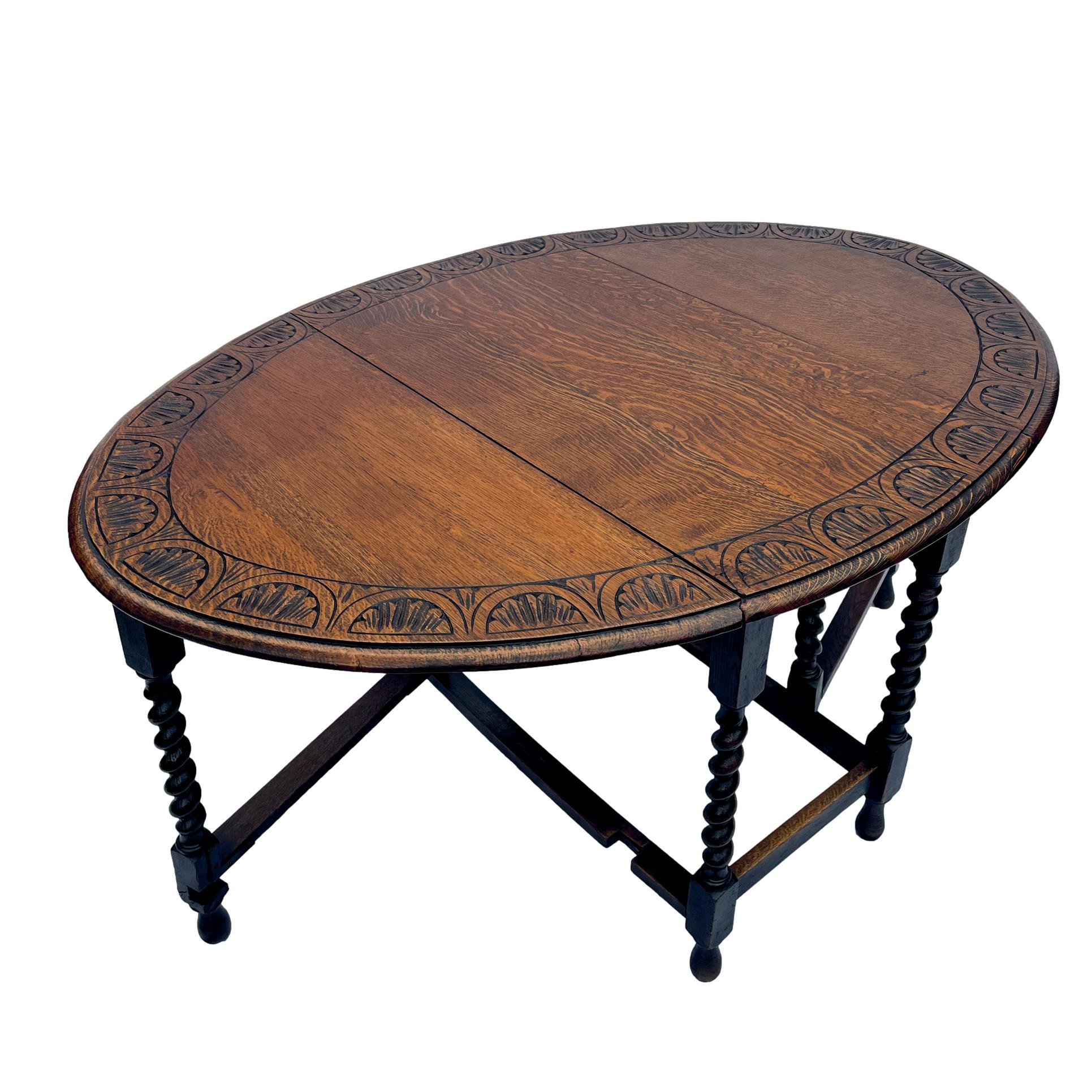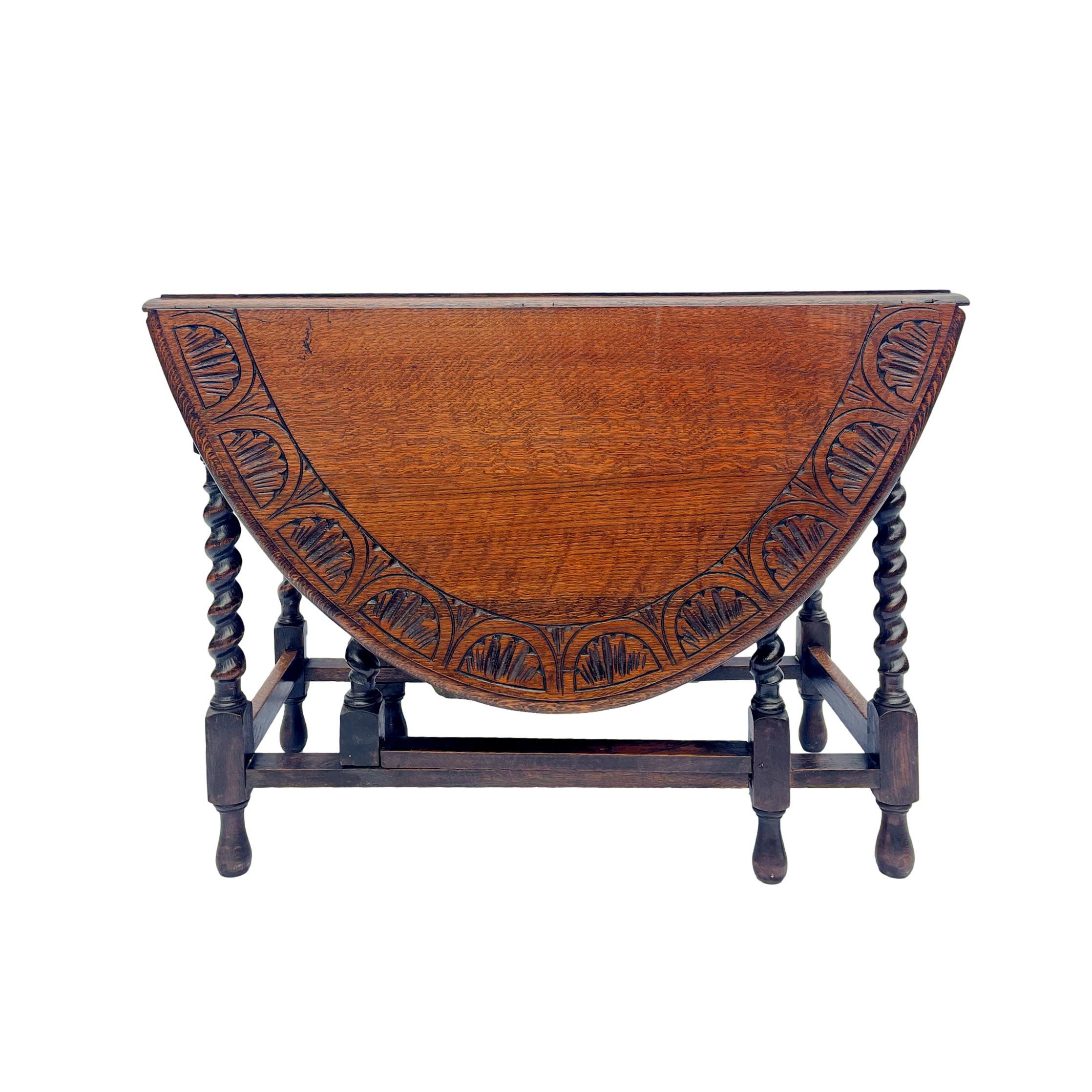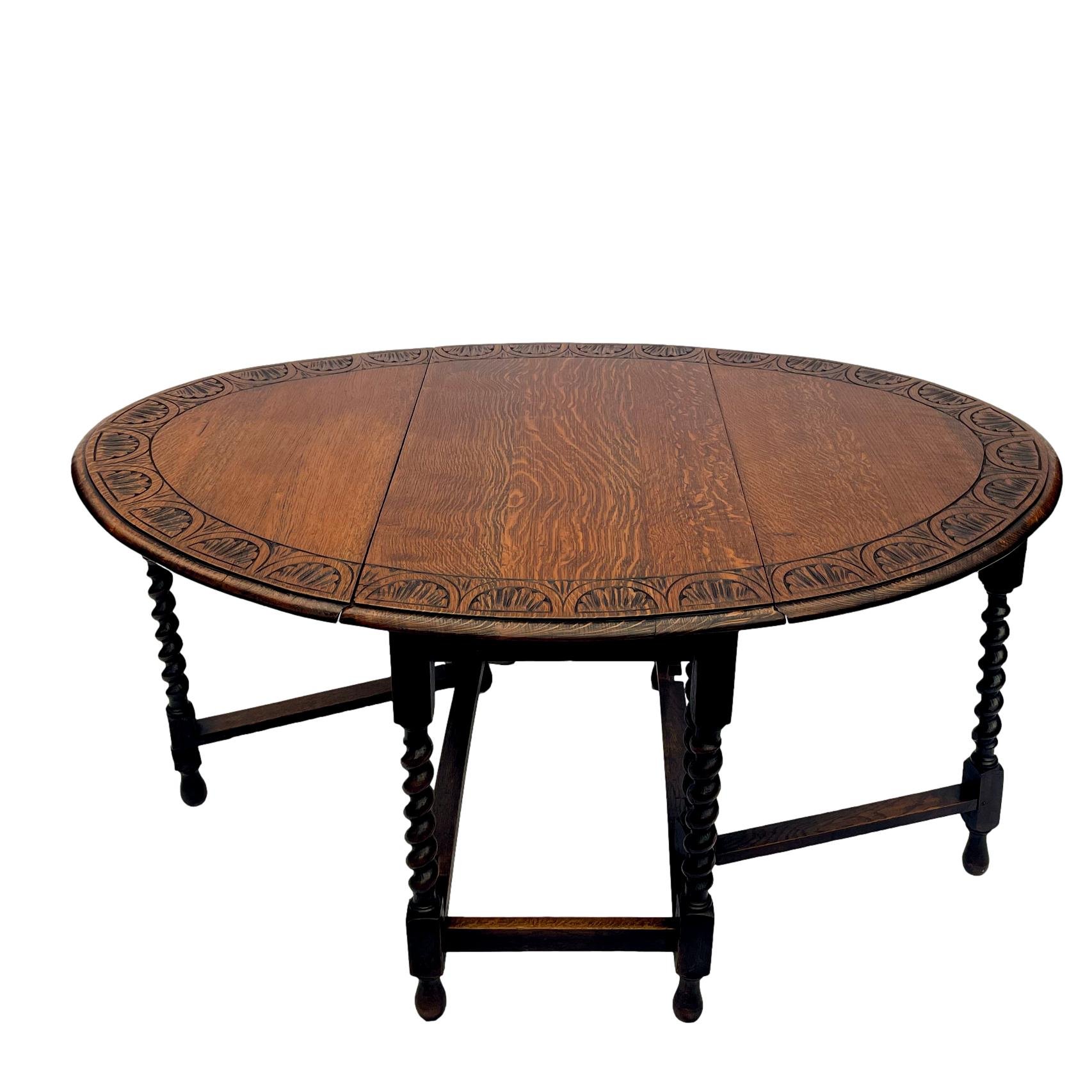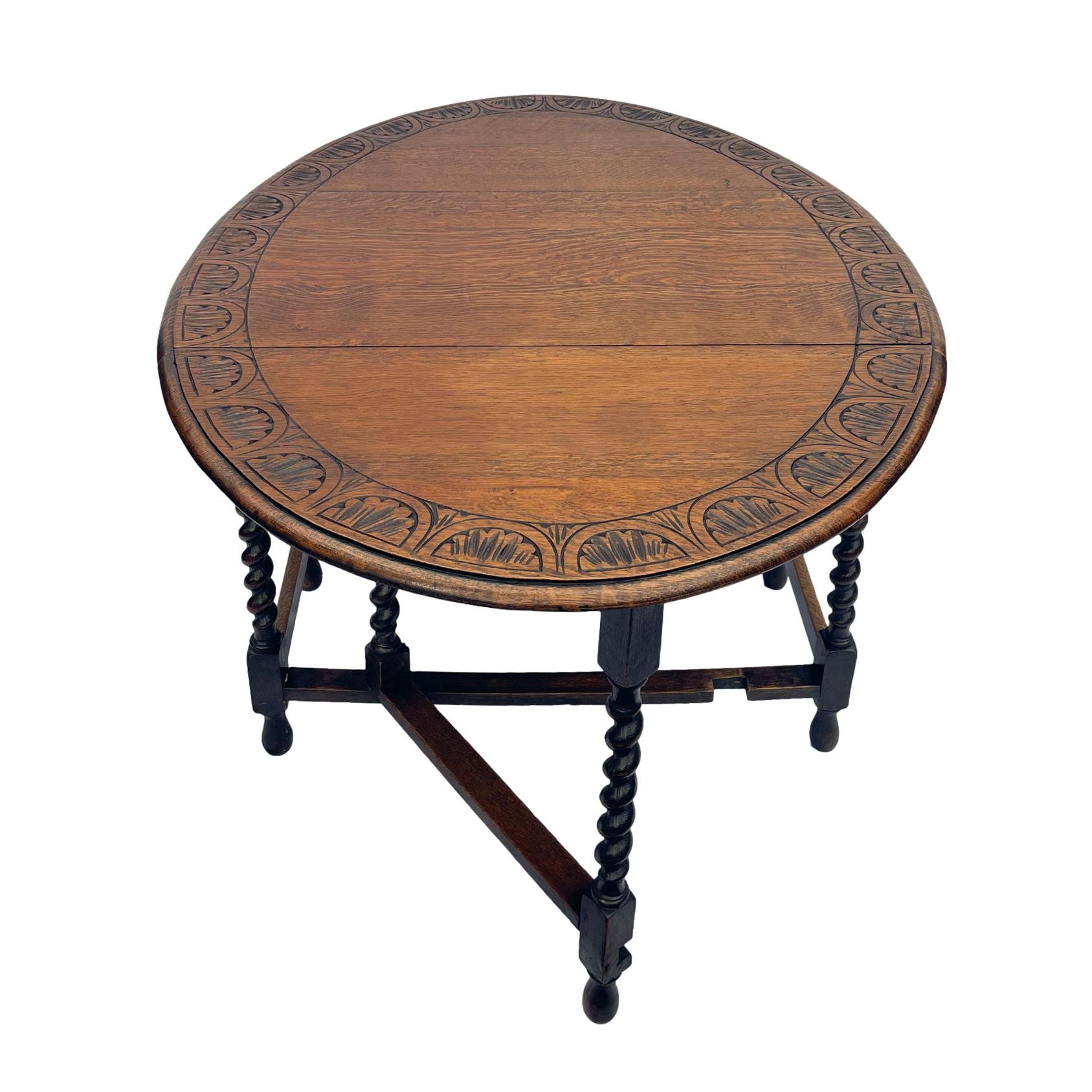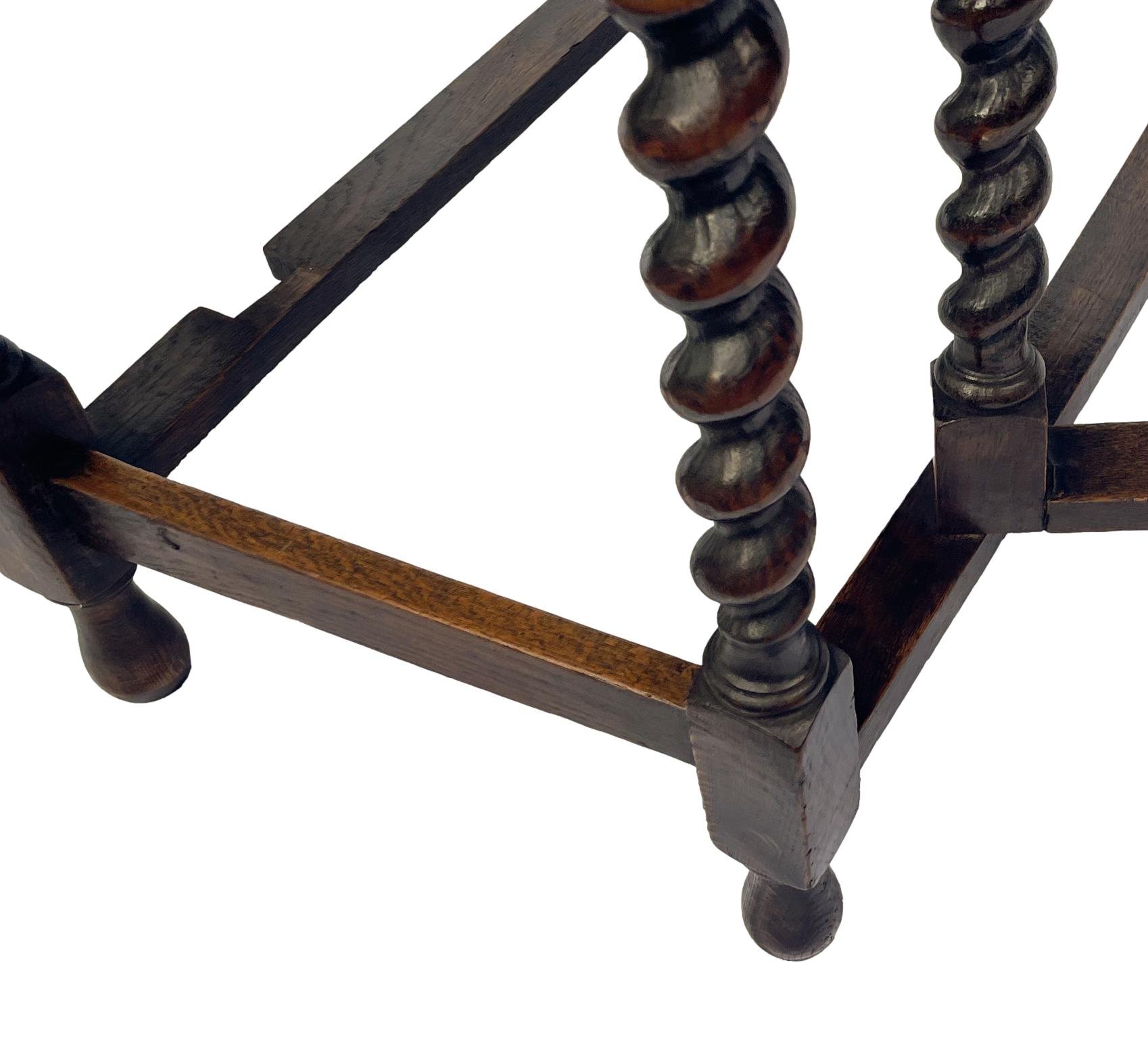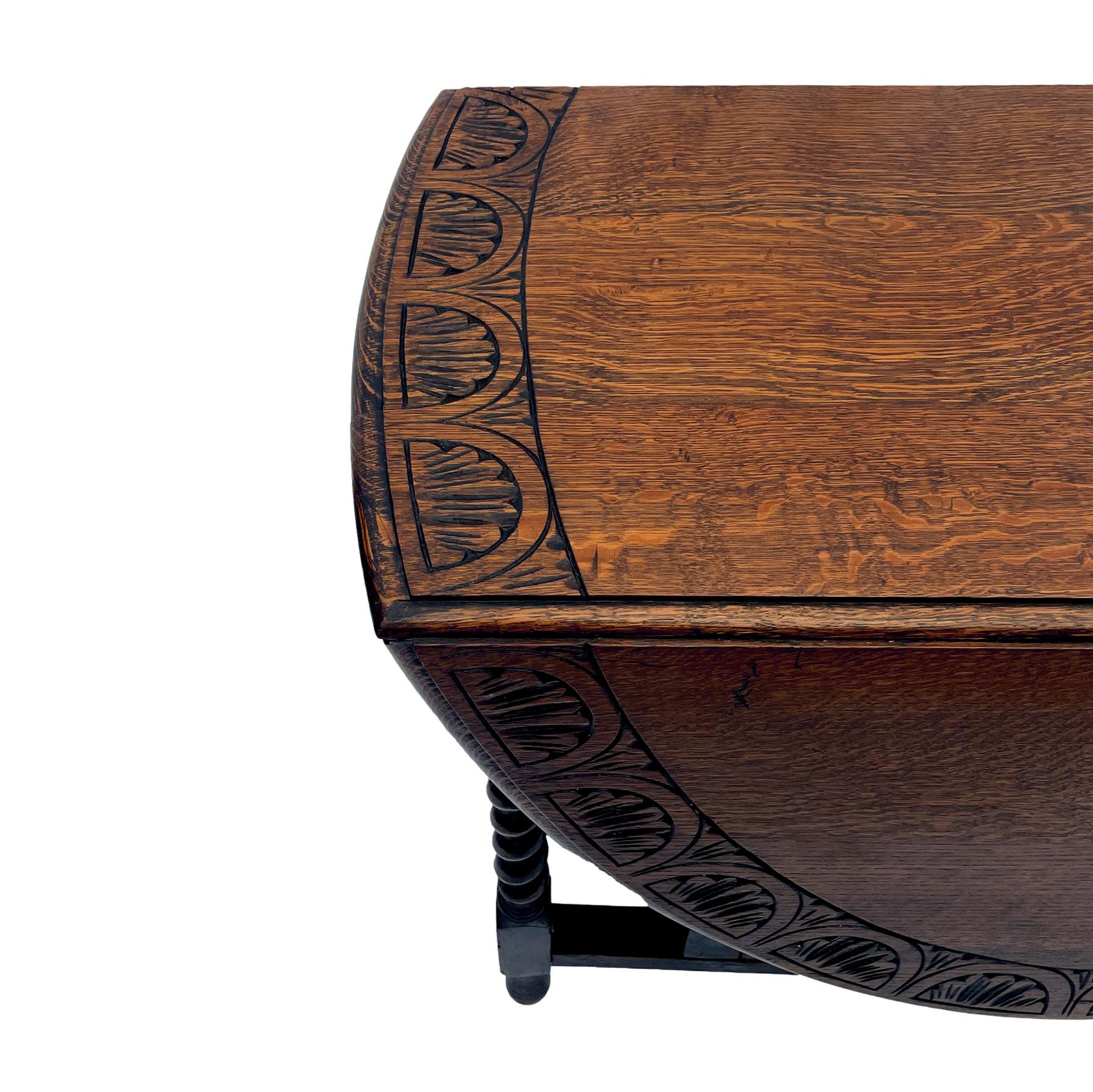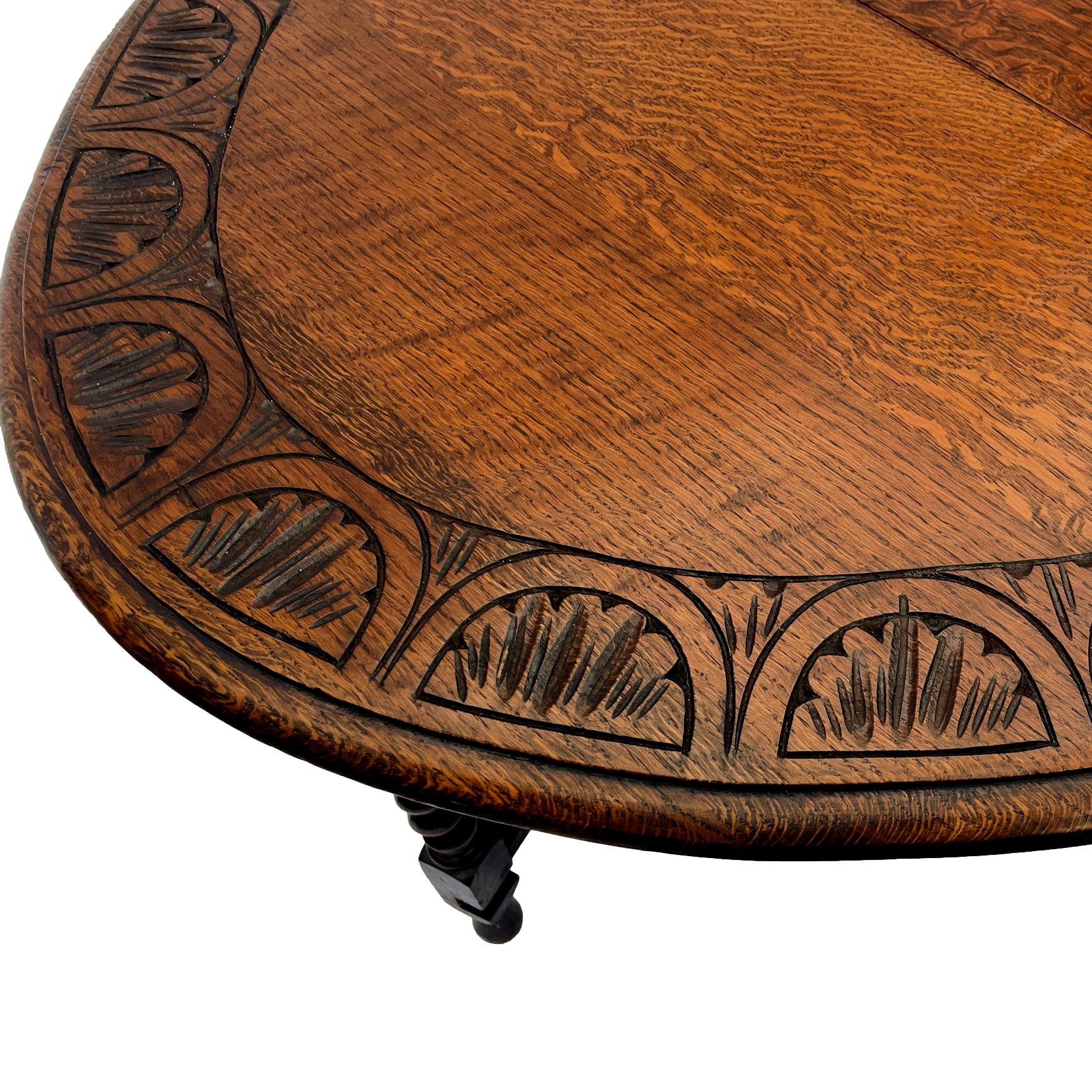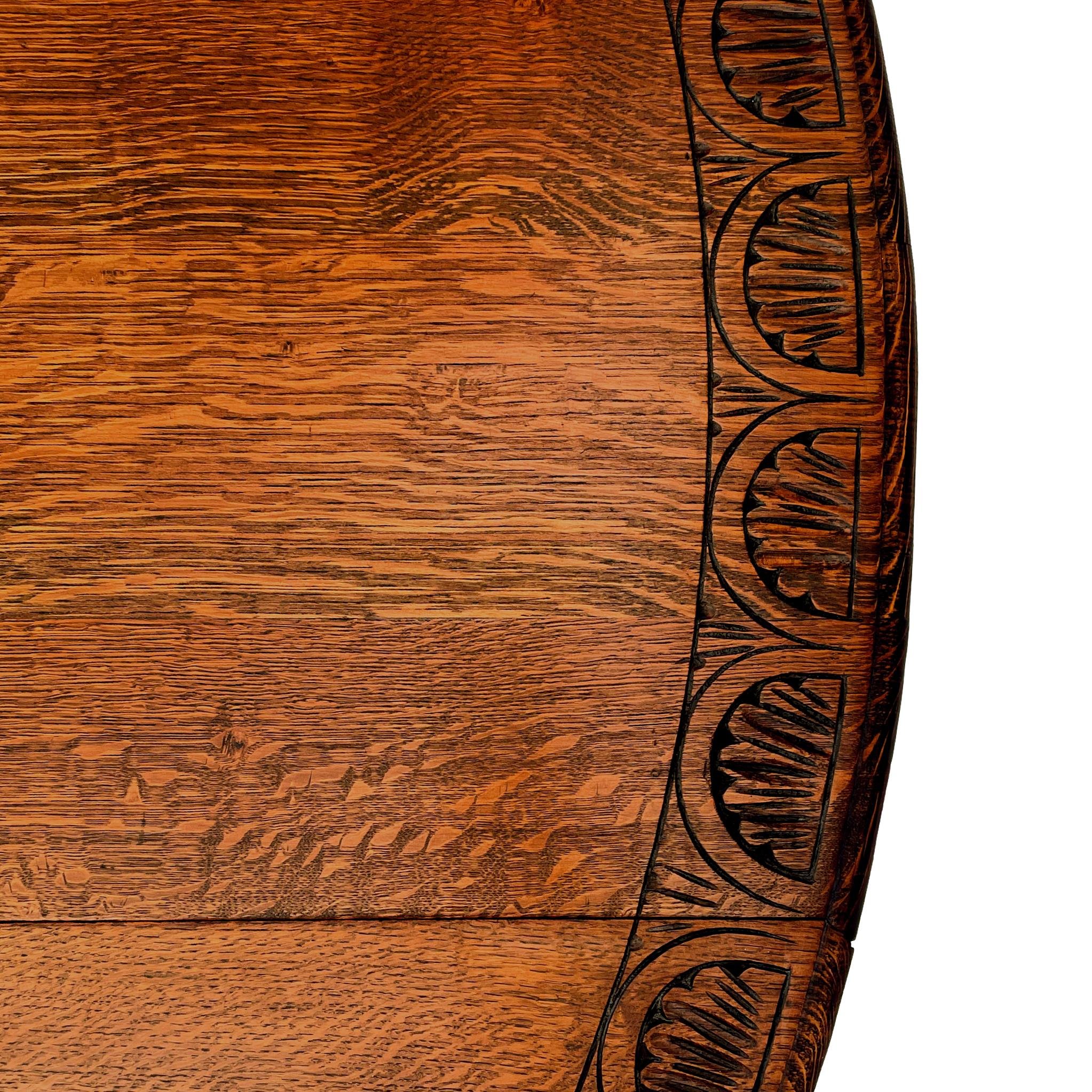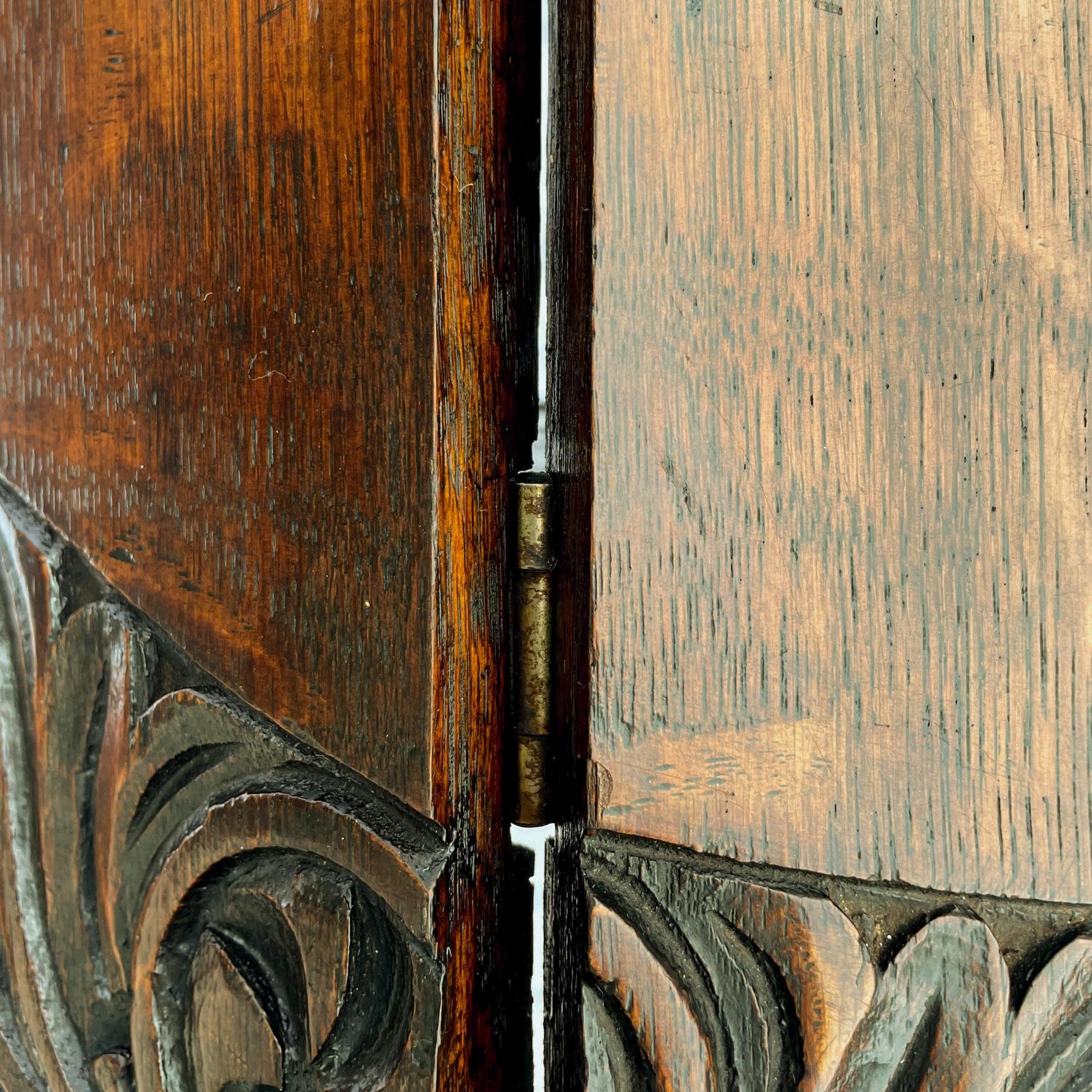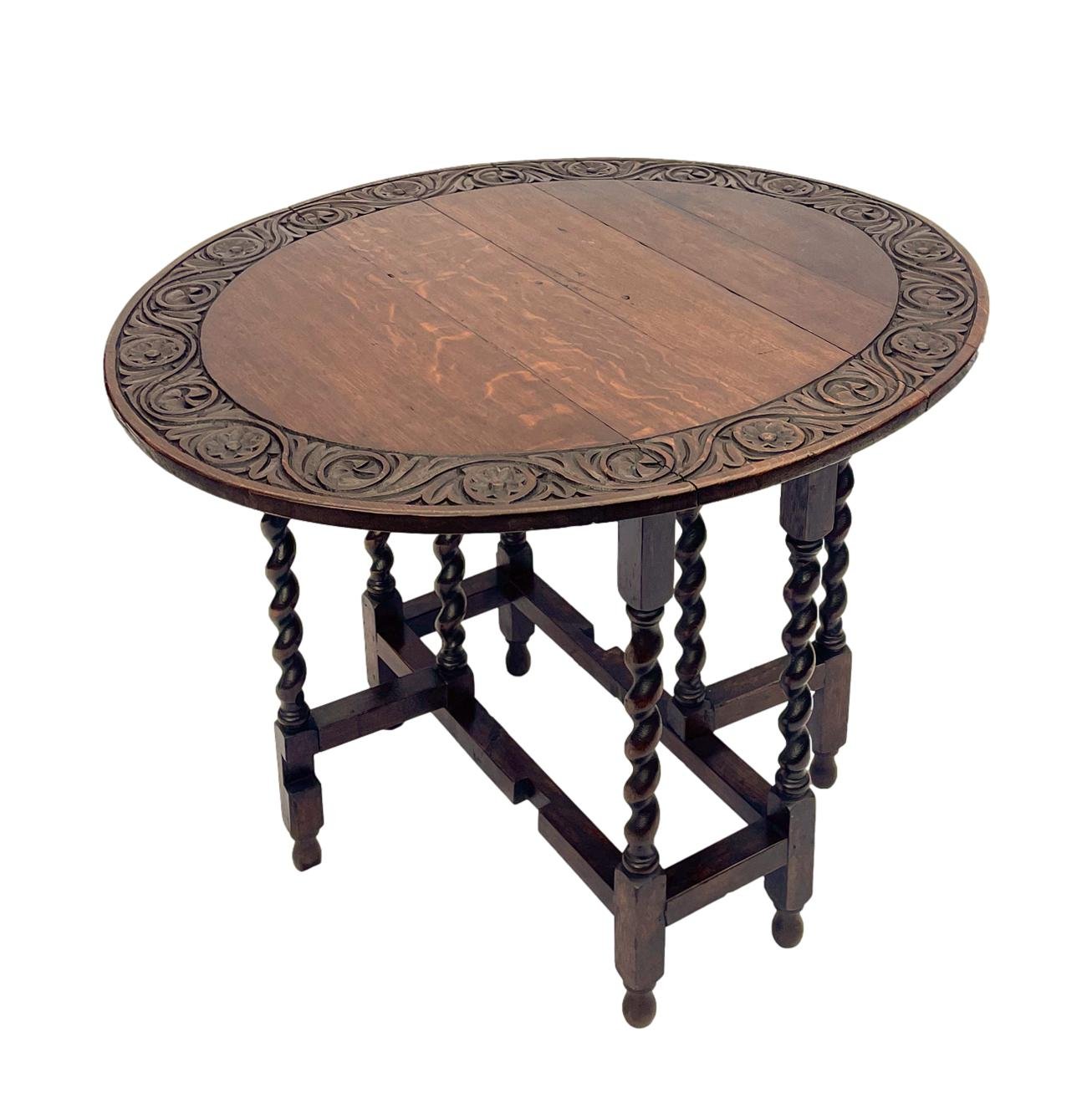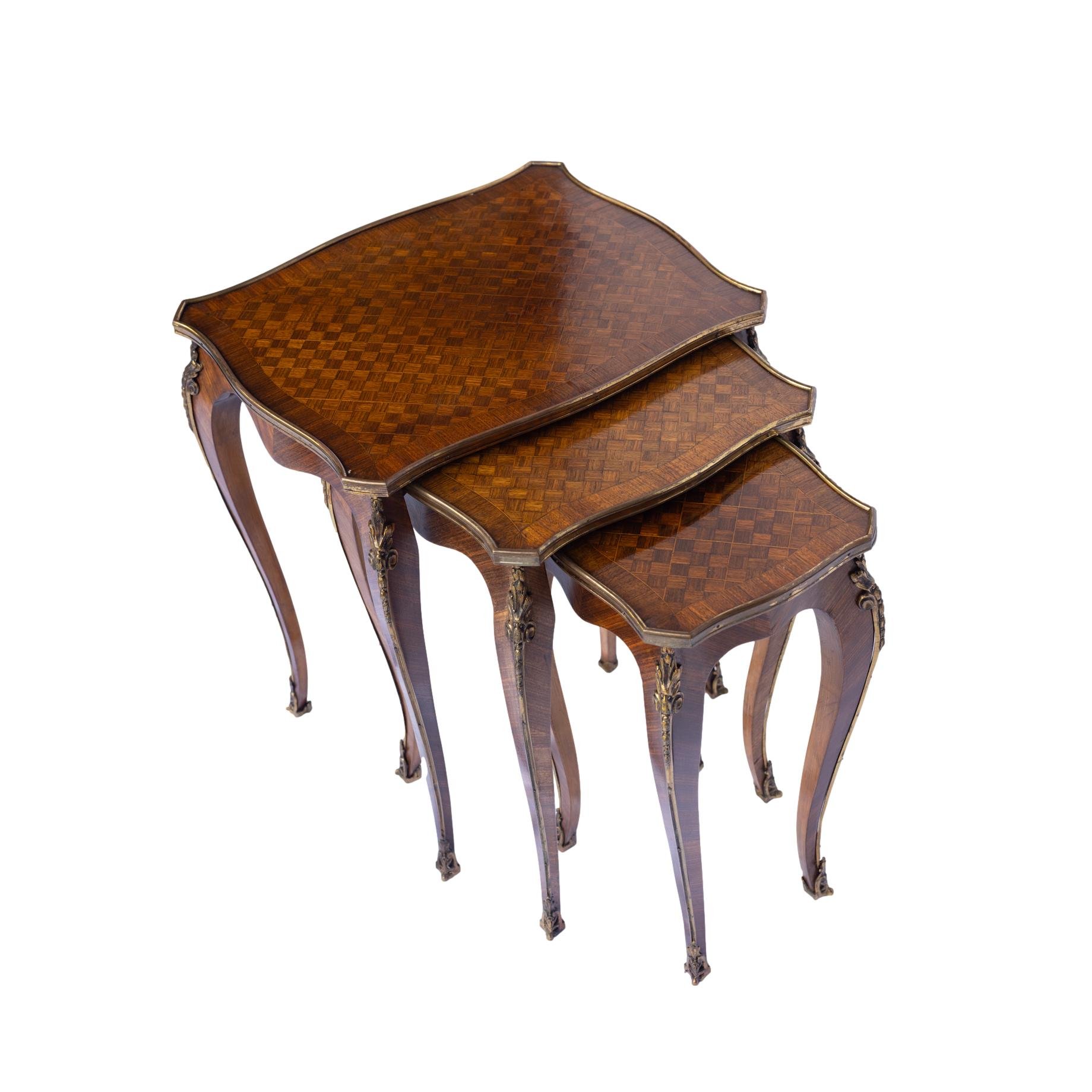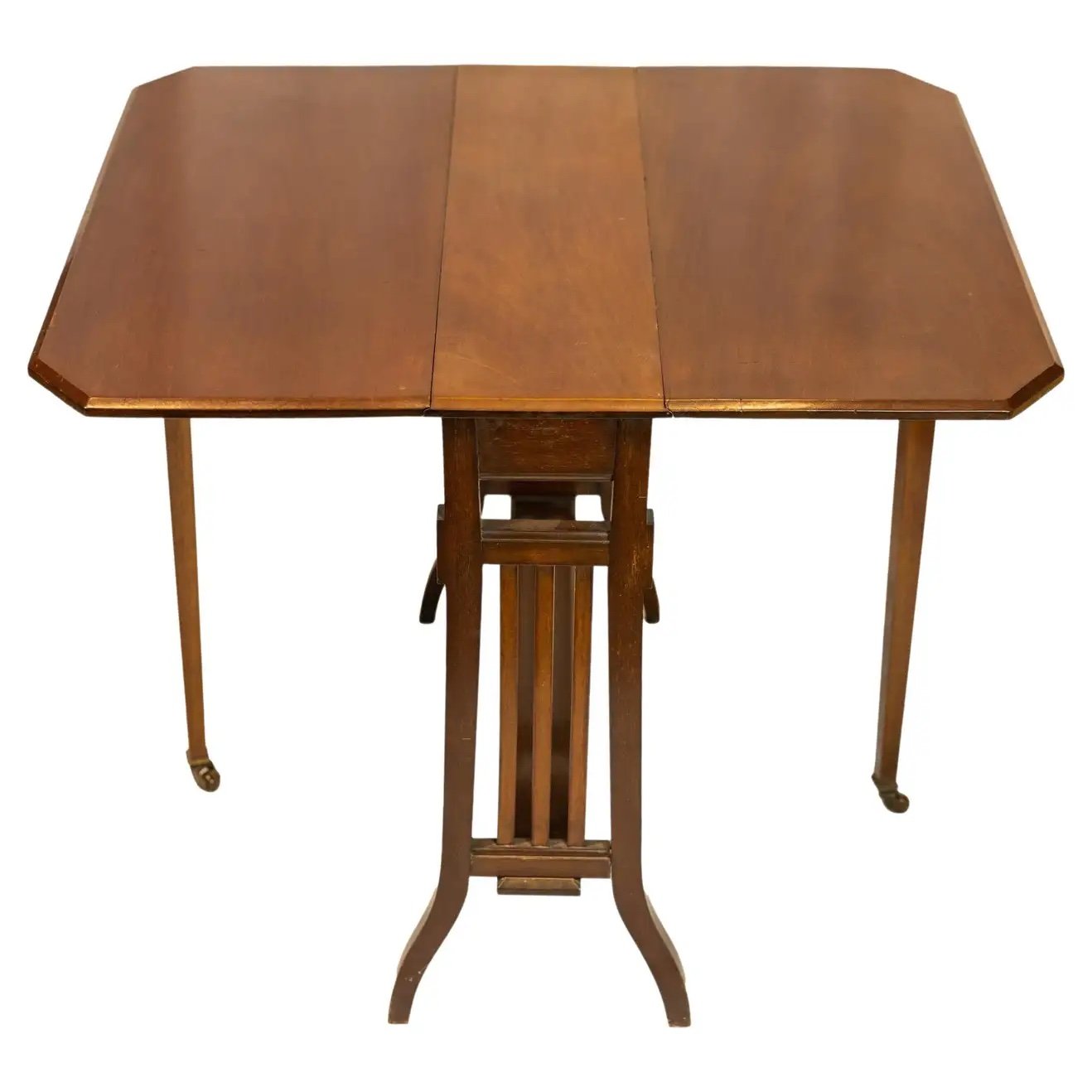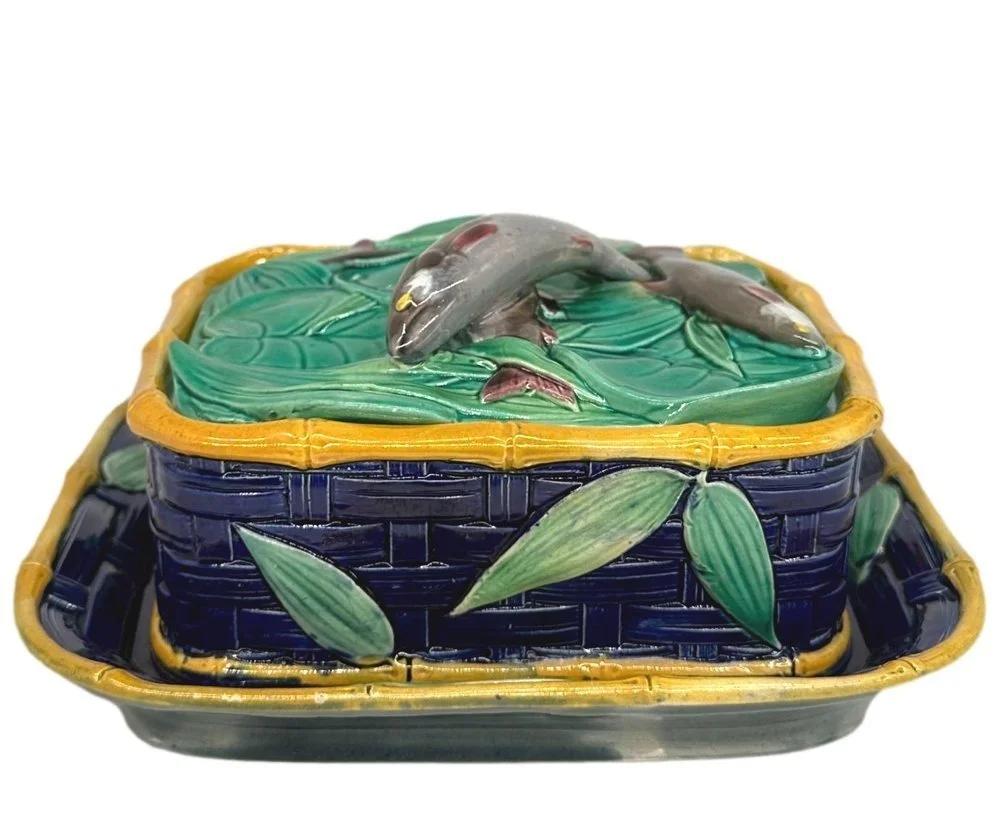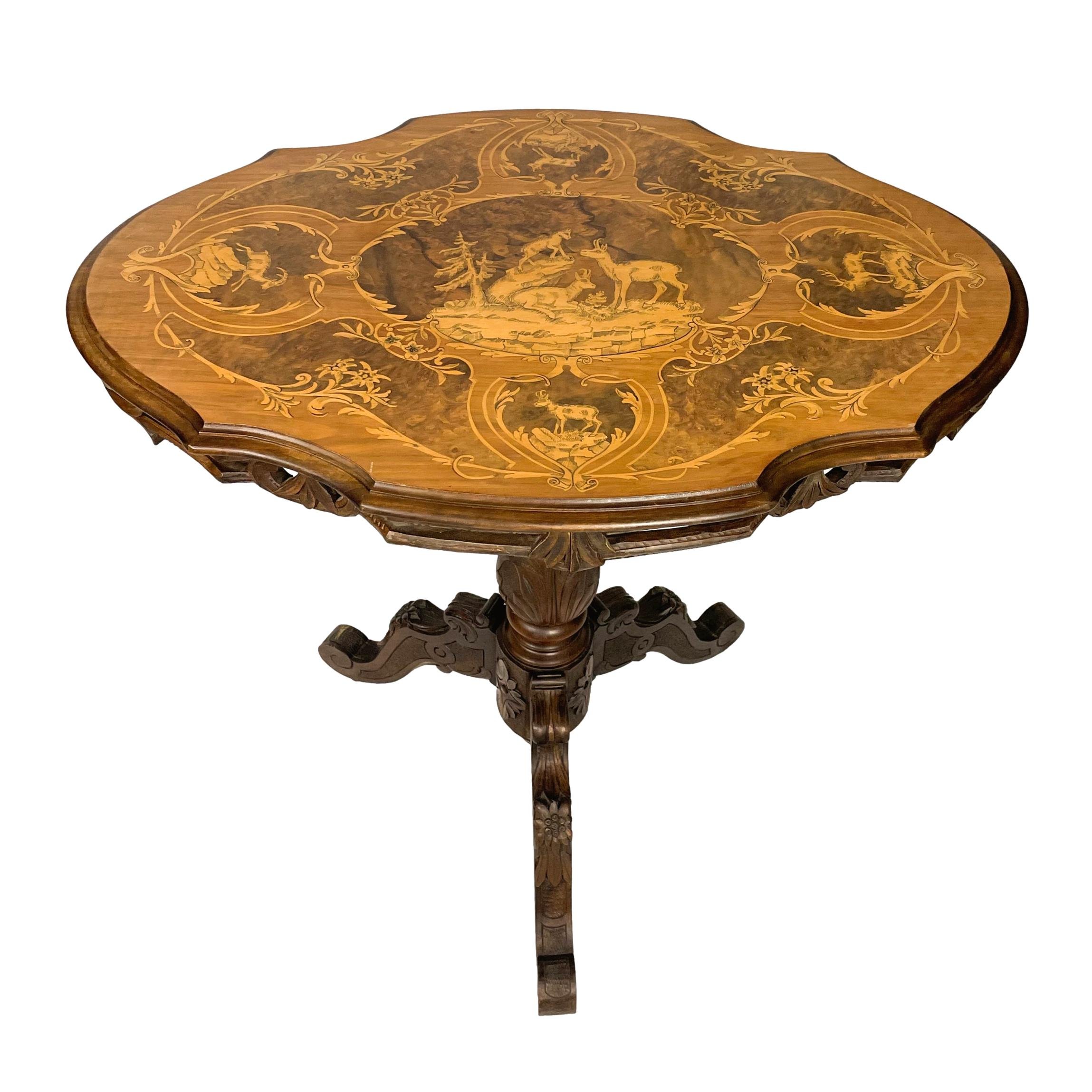 Image 1 of 12
Image 1 of 12

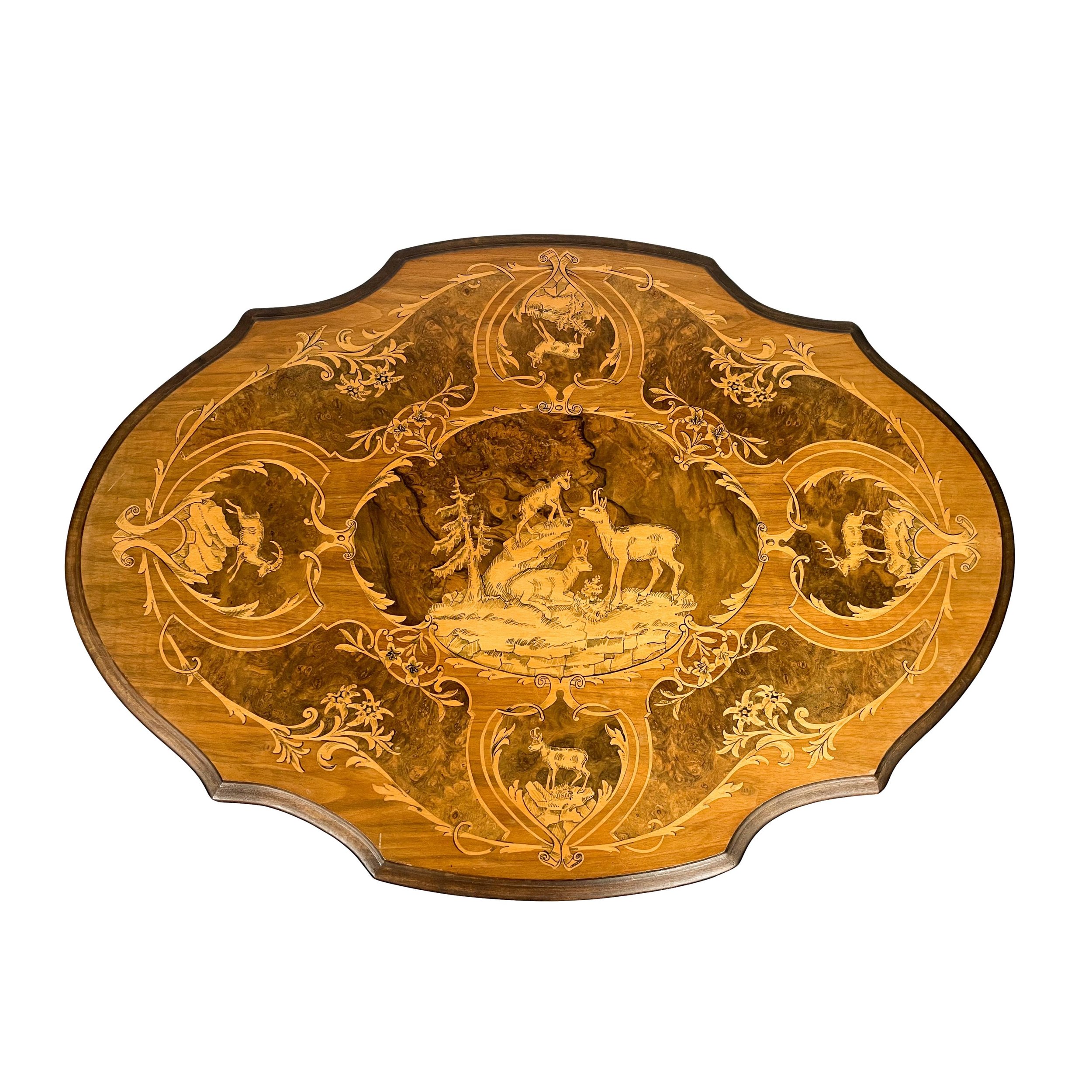 Image 2 of 12
Image 2 of 12

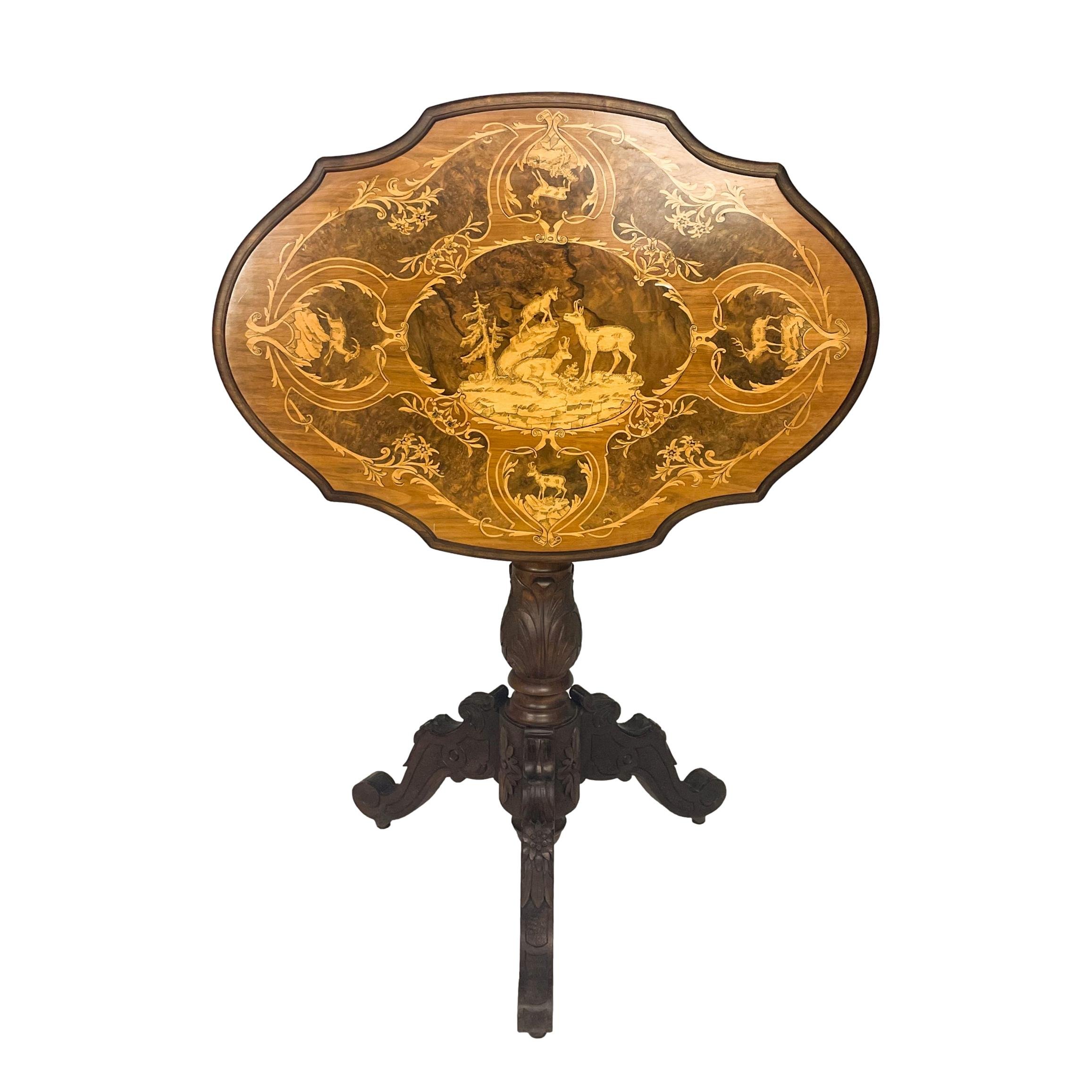 Image 3 of 12
Image 3 of 12

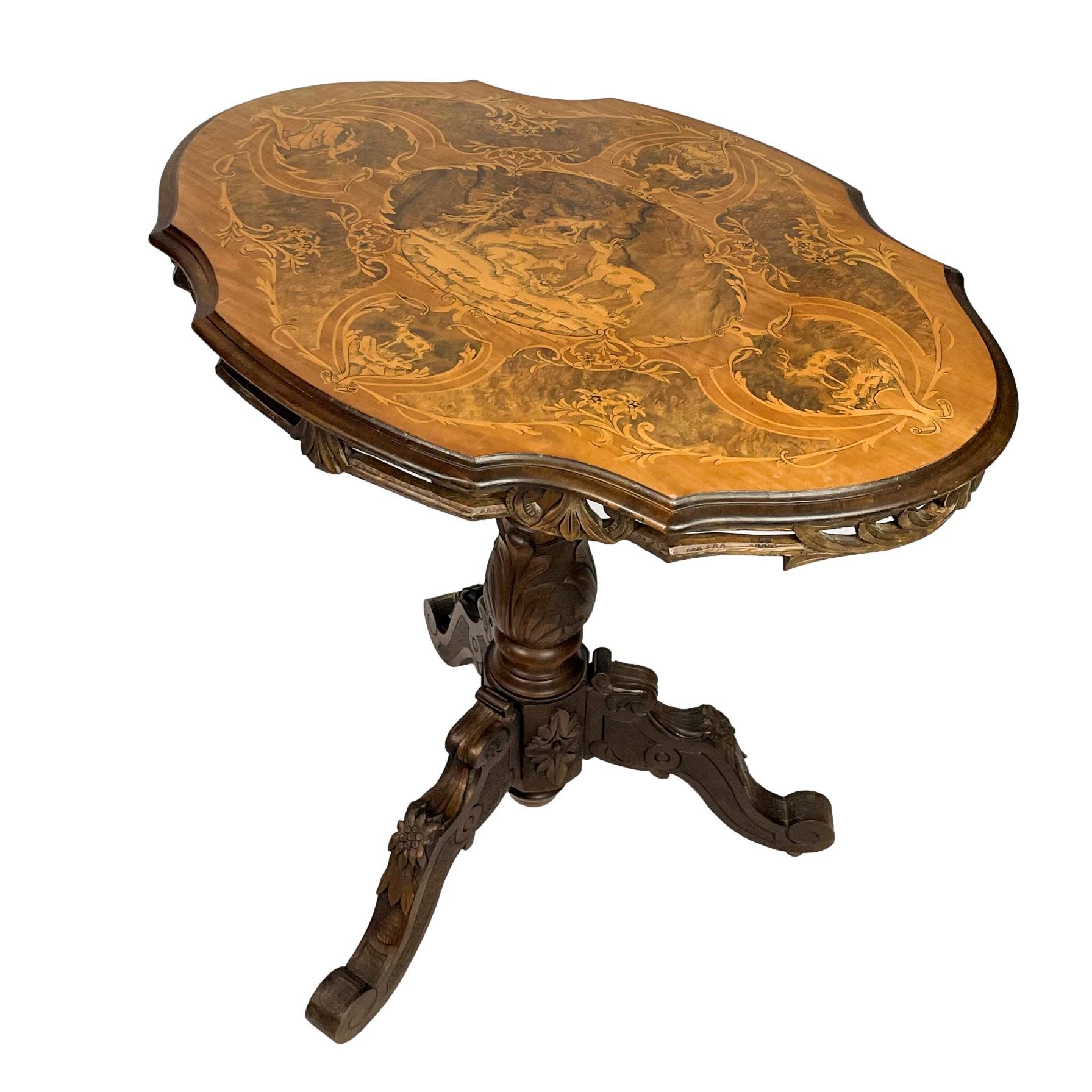 Image 4 of 12
Image 4 of 12

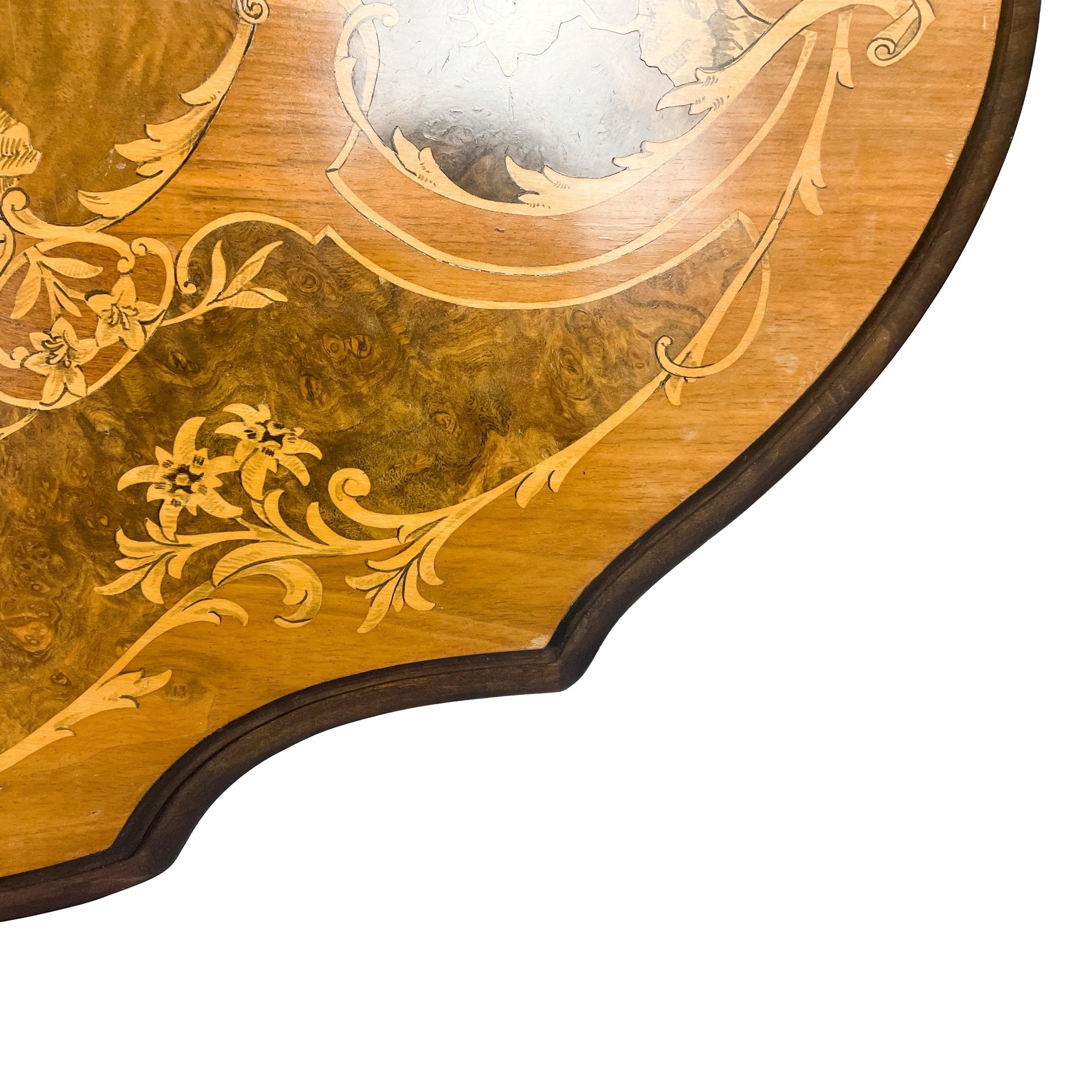 Image 5 of 12
Image 5 of 12

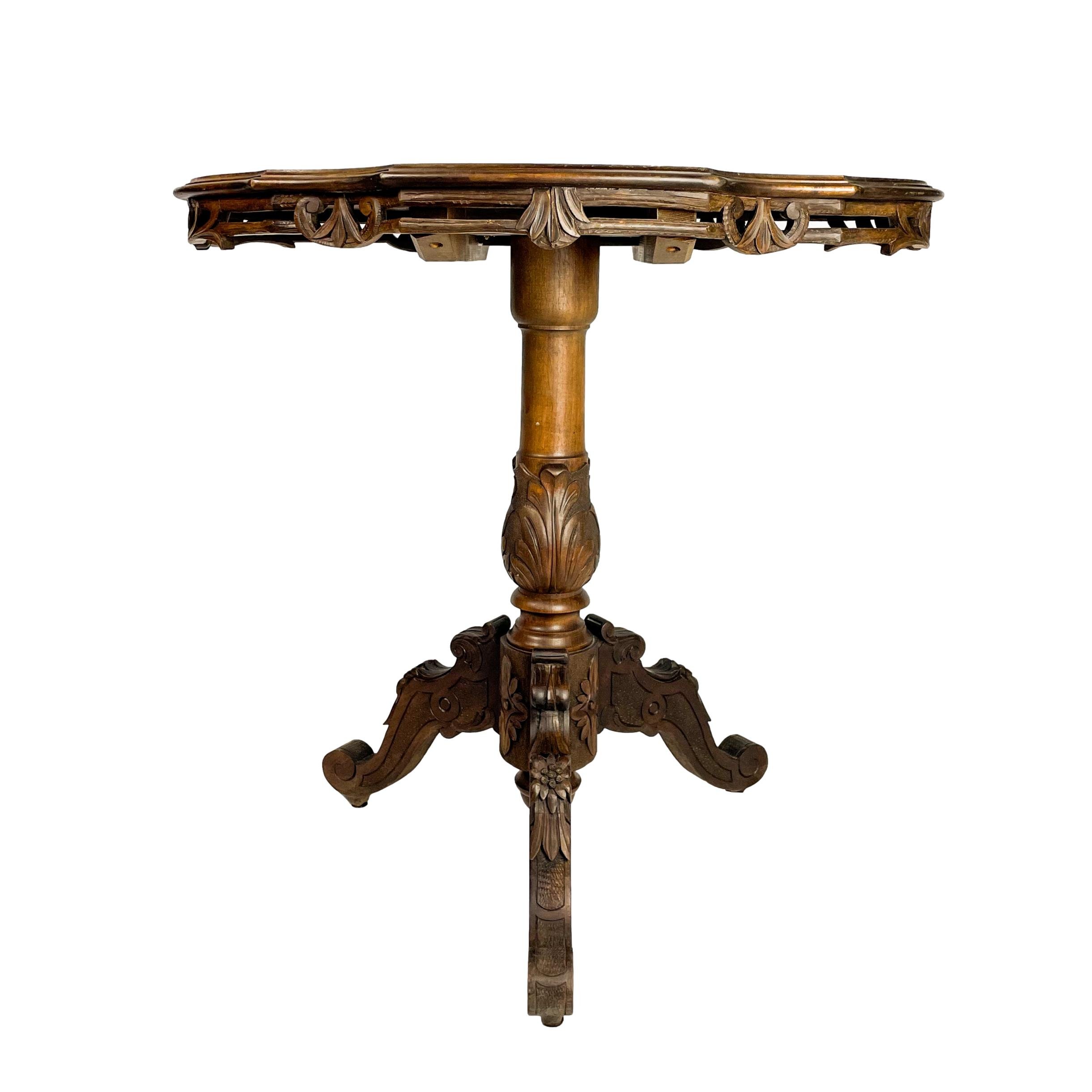 Image 6 of 12
Image 6 of 12

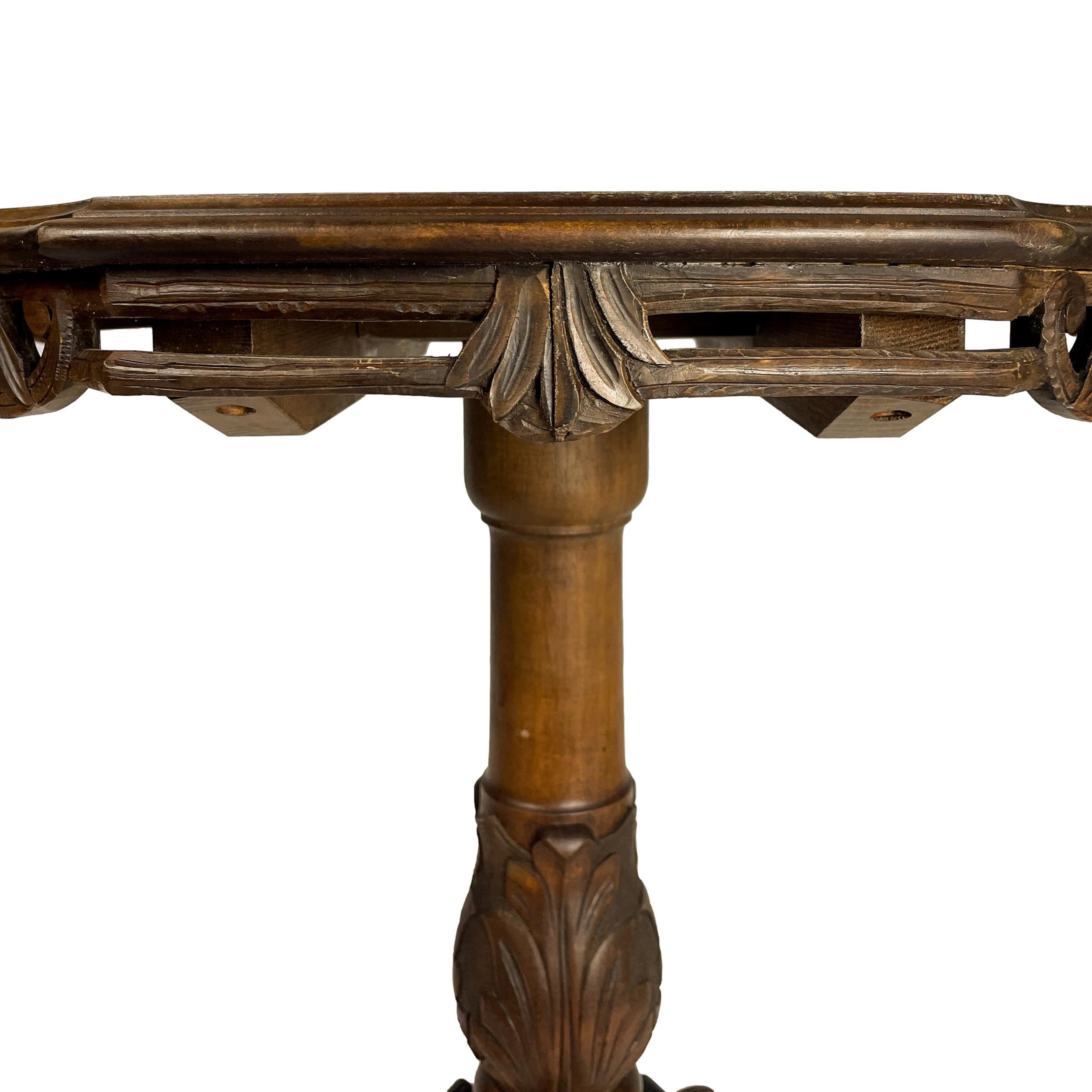 Image 7 of 12
Image 7 of 12

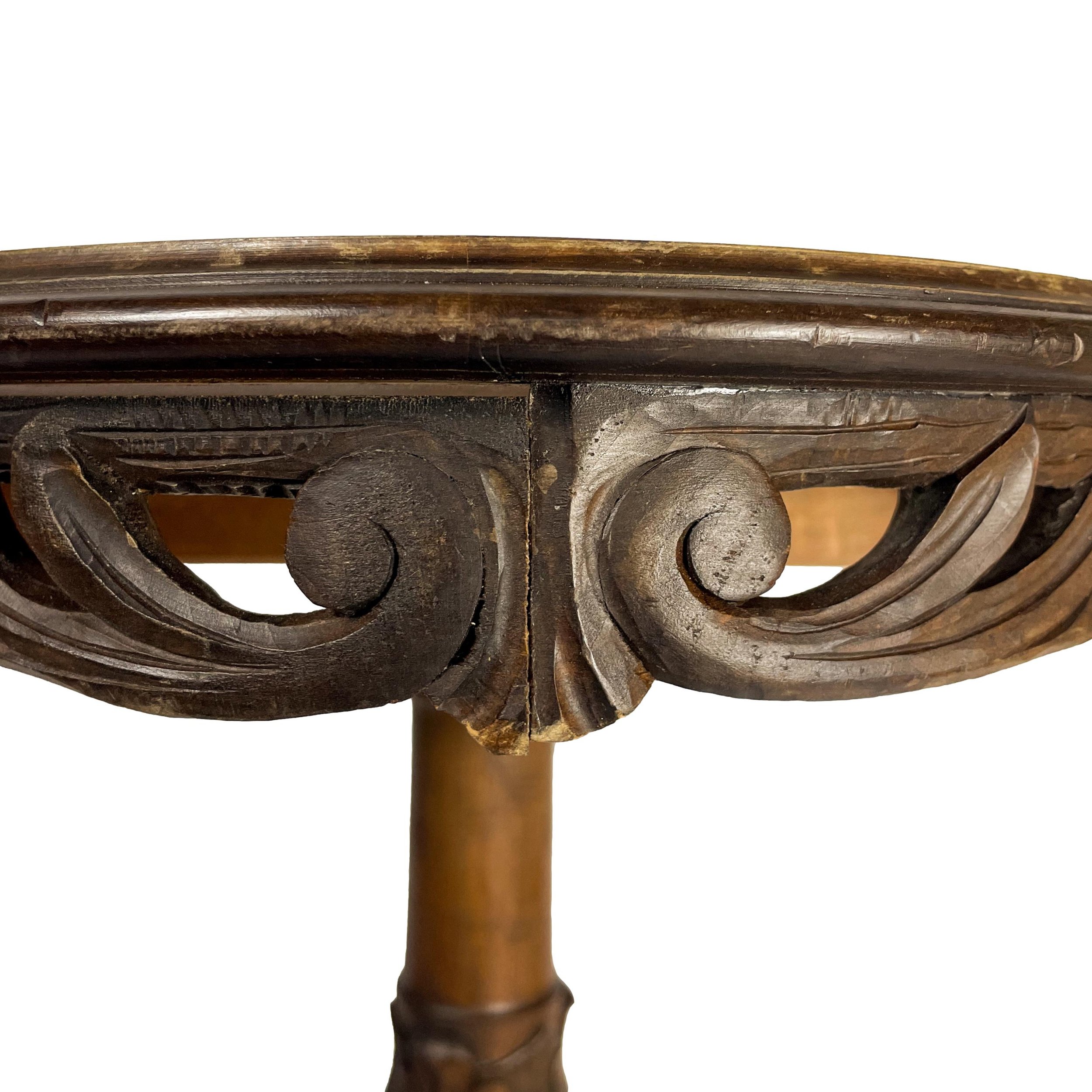 Image 8 of 12
Image 8 of 12

 Image 9 of 12
Image 9 of 12

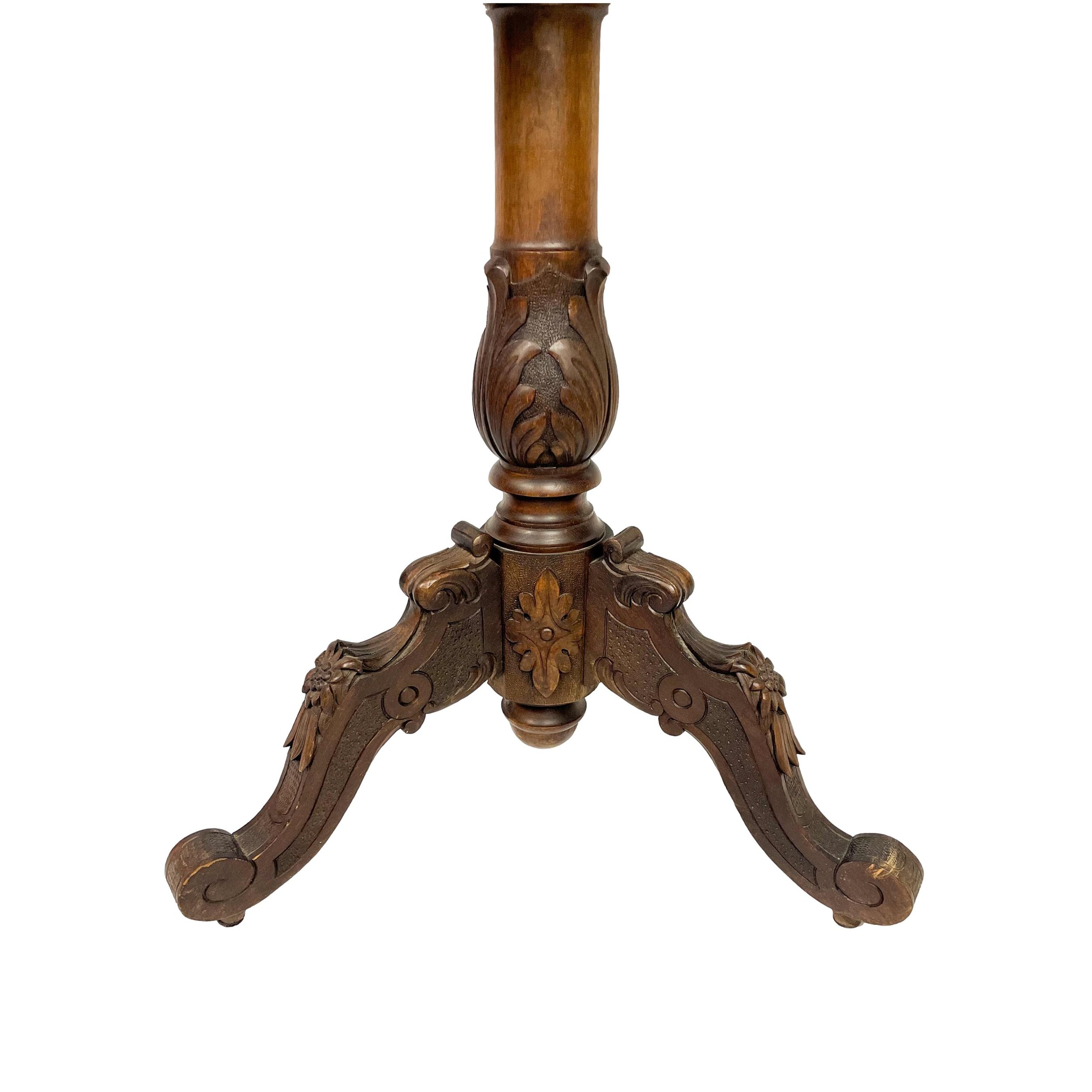 Image 10 of 12
Image 10 of 12

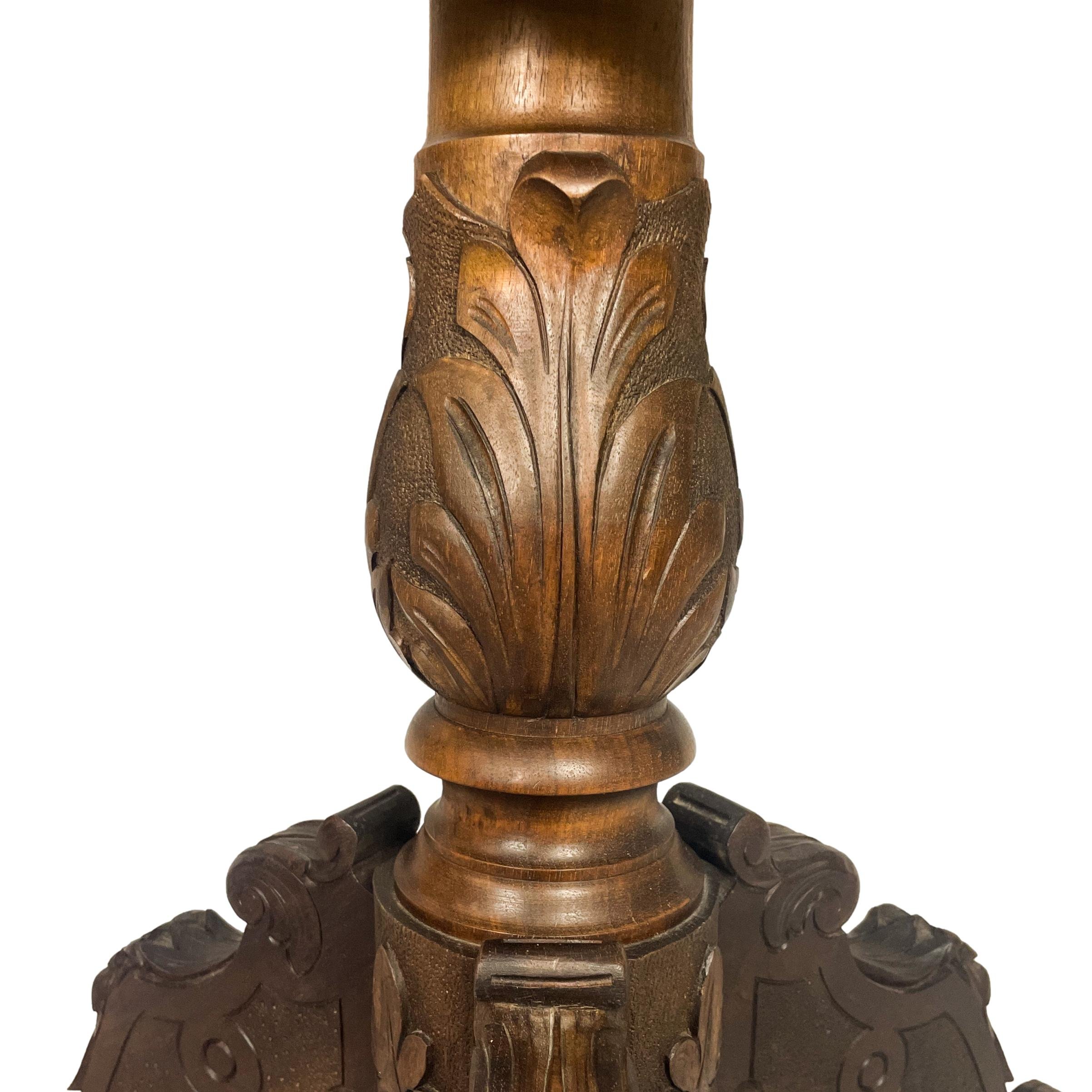 Image 11 of 12
Image 11 of 12

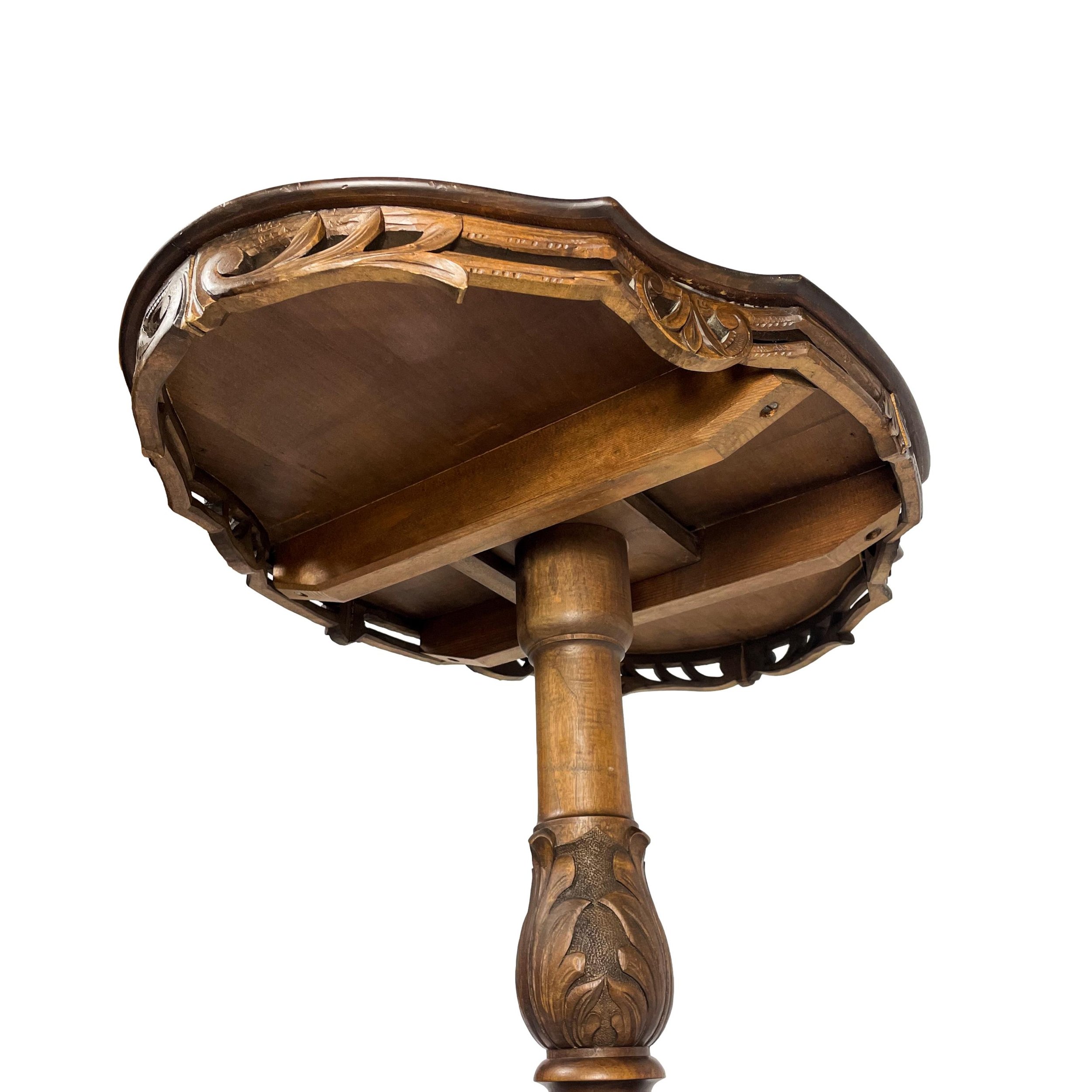 Image 12 of 12
Image 12 of 12

Black Forest Carved & Intricately Inlaid Tilt-Top Center Table, Swiss, Ca. 1900
Black forest carved walnut tilt-top table, the top intricately inlaid with a central medallion depicting a family of alpine chamois, surrounded by medallions of inlaid floral scrollwork alternating with four cartouches containing a single chamois, with carved and molded edges above a carved and filigreed apron, the central supporting post with banded acanthus leaves, on an elaborately carved tripod base, with fully operating tilting mechanism and latch.
Attributed to Arnold Wyss, Brienz, Switzerland, ca. 1900.*
Book Reference:
*Jay Arenski, Simon and Michael Daniels, SWISS CARVINGS: THE ART of the Black Forest 1820-1940. Easthampton, MA: Antique Collectors Club, 2005, p. 151.
Arenski quotes Swiss Poet Heinrich Federer, who said in his memoirs, "Woodcarving brought riches to the village [of Brienz]. It became all the fashion and no Englishman left the Bernese Highlands without having seen the Giessbach, having eaten a fat roasted eel and having bought a Brienz woodcarving." Arenski goes on to say, "Thus, as the tourist industry flourished and thrived, so did the carvers, selling their wares to the well-heeled visitors."
This fashion had been set in motion by Queen Victoria's visit to the area in April 1868, and by her subsequent inspiration to build a Swiss chalet at Osborne House and fill it with Black Forest Swiss carvings (Arenski et al., p. 13-14).
Dimensions: Height: 29 in. (73.66 cm) x Width: 30 in. (76.2 cm) x Depth: 30 in. (76.2 cm)
Black forest carved walnut tilt-top table, the top intricately inlaid with a central medallion depicting a family of alpine chamois, surrounded by medallions of inlaid floral scrollwork alternating with four cartouches containing a single chamois, with carved and molded edges above a carved and filigreed apron, the central supporting post with banded acanthus leaves, on an elaborately carved tripod base, with fully operating tilting mechanism and latch.
Attributed to Arnold Wyss, Brienz, Switzerland, ca. 1900.*
Book Reference:
*Jay Arenski, Simon and Michael Daniels, SWISS CARVINGS: THE ART of the Black Forest 1820-1940. Easthampton, MA: Antique Collectors Club, 2005, p. 151.
Arenski quotes Swiss Poet Heinrich Federer, who said in his memoirs, "Woodcarving brought riches to the village [of Brienz]. It became all the fashion and no Englishman left the Bernese Highlands without having seen the Giessbach, having eaten a fat roasted eel and having bought a Brienz woodcarving." Arenski goes on to say, "Thus, as the tourist industry flourished and thrived, so did the carvers, selling their wares to the well-heeled visitors."
This fashion had been set in motion by Queen Victoria's visit to the area in April 1868, and by her subsequent inspiration to build a Swiss chalet at Osborne House and fill it with Black Forest Swiss carvings (Arenski et al., p. 13-14).
Dimensions: Height: 29 in. (73.66 cm) x Width: 30 in. (76.2 cm) x Depth: 30 in. (76.2 cm)
Black forest carved walnut tilt-top table, the top intricately inlaid with a central medallion depicting a family of alpine chamois, surrounded by medallions of inlaid floral scrollwork alternating with four cartouches containing a single chamois, with carved and molded edges above a carved and filigreed apron, the central supporting post with banded acanthus leaves, on an elaborately carved tripod base, with fully operating tilting mechanism and latch.
Attributed to Arnold Wyss, Brienz, Switzerland, ca. 1900.*
Book Reference:
*Jay Arenski, Simon and Michael Daniels, SWISS CARVINGS: THE ART of the Black Forest 1820-1940. Easthampton, MA: Antique Collectors Club, 2005, p. 151.
Arenski quotes Swiss Poet Heinrich Federer, who said in his memoirs, "Woodcarving brought riches to the village [of Brienz]. It became all the fashion and no Englishman left the Bernese Highlands without having seen the Giessbach, having eaten a fat roasted eel and having bought a Brienz woodcarving." Arenski goes on to say, "Thus, as the tourist industry flourished and thrived, so did the carvers, selling their wares to the well-heeled visitors."
This fashion had been set in motion by Queen Victoria's visit to the area in April 1868, and by her subsequent inspiration to build a Swiss chalet at Osborne House and fill it with Black Forest Swiss carvings (Arenski et al., p. 13-14).
Dimensions: Height: 29 in. (73.66 cm) x Width: 30 in. (76.2 cm) x Depth: 30 in. (76.2 cm)


